SOLAR FOR ALL
SPECIALIZED INSTALLATION TIPS
SOLAR ON PARKING GARAGES USING ENERGY STORAGE TO PENCIL PV
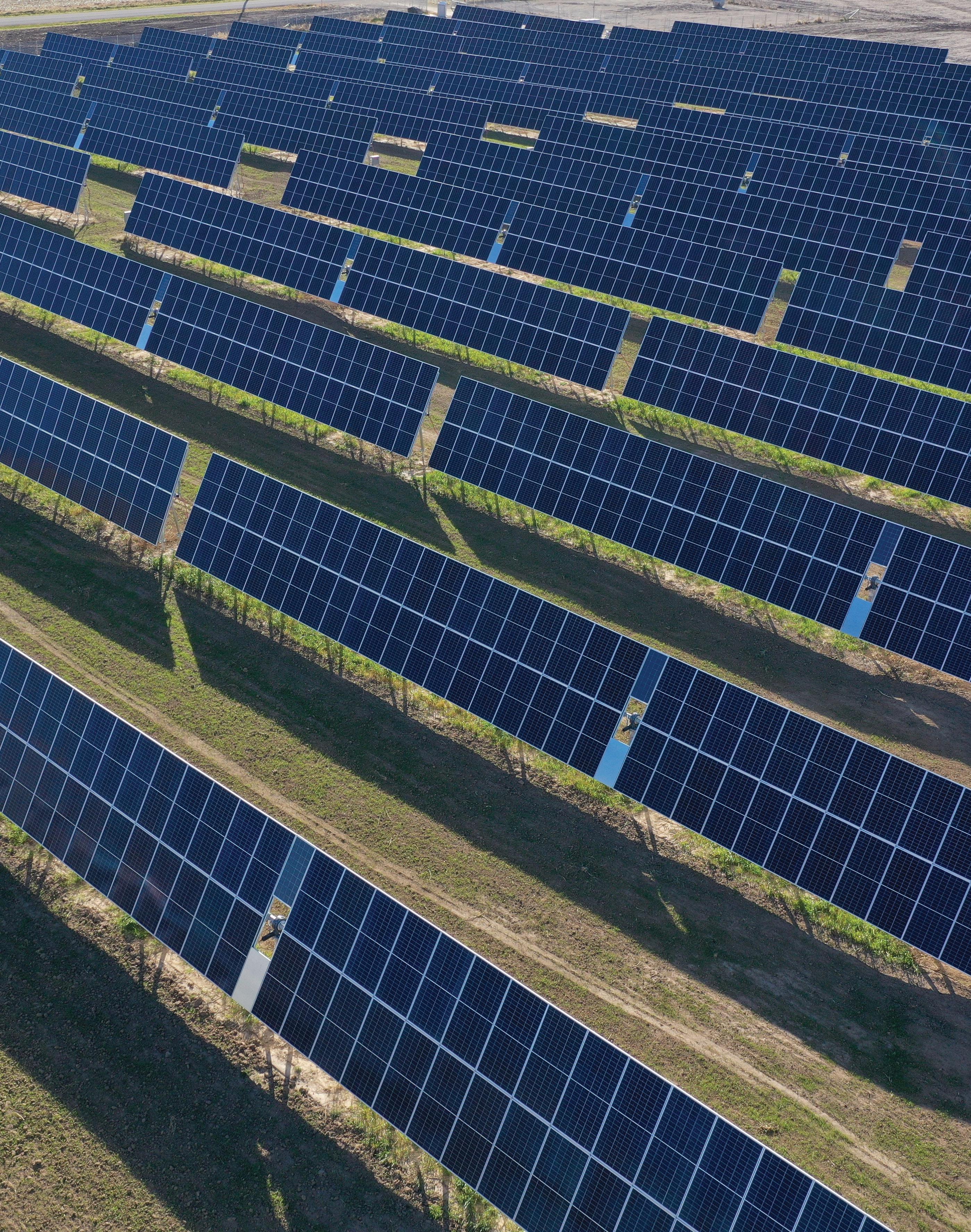
SPOTLIGHT ON COMMUNITY SOLAR
March 2024
• Development • Installation
www.solarpowerworldonline.com
Technology




SOLAR PV SYSTEM EQUIPPED WITH RAPID SHUTDOWN TURN RAPID SHUTDOWN SWITCH TO THE “OFF” POSITION TO SHUT DOWN PV SYSTEM AND REDUCE SHOCK HAZARD IN THE ARRAY SOLAR ELECTRIC PV PANELS #05-112 - 2023 NEC 690.12(D) #05-379 - 2023 NEC 690.31(B)(1) INVERTER OUTPUT CIRCUIT #05-383 - 2023 NEC 690.31(B)(1) #05-324 - 2023 NEC 110.22(A) #05-323 - 2023 NEC 110.22(A) AC DISCONNECT AMPS VOLTS PHOTOVOLTAIC SYSTEM POWER SOURCE RATED AC OUTPUT CURRENT NOMINAL OPERATING AC VOLTAGE #03-306 - 2023 NEC 690.31(D)(2)(c) #05-346 - 2023 NEC POPULAR ITEM SOURCES UTILITY GRID AND PV SOLAR ELECTRIC SYSTEM #05-411 - 2023 NEC POPULAR ITEM AC JUNCTION BOX DO NOT TOUCH TERMINALS TERMINALS ON BOTH THE LINE AND LOAD SIDES MAY BE ENERGIZED ELECTRIC SHOCK HAZARD CAUTION SOLAR CIRCUIT #05-219 - 2023 NEC 690.13(B) DC JUNCTION BOX ELECTRIC SHOCK HAZARD DO NOT DISCONNECT UNDER LOAD PHOTOVOLTAIC POWER SOURCE DC JUNCTION BOX ELECTRIC SHOCK HAZARD DO NOT DISCONNECT UNDER LOAD PHOTOVOLTAIC POWER SOURCE #05-232 - 2023 NEC 690.15(B) PV SYSTEM DISCONNECT ELECTRIC SHOCK HAZARD TERMINALS ON THE LINE AND LOAD SIDES MAY BE ENERGIZED IN THE OPEN POSITION PV SYSTEM DISCONNECT ELECTRIC SHOCK HAZARD TERMINALS ON THE LINE AND LOAD SIDES MAY BE ENERGIZED IN THE OPEN POSITION #05-109 - 2023 NEC 690.13(B) TERMINALS ON THE LINE AND LOAD SIDES MAY BE ENERGIZED IN THE OPEN POSITION ELECTRIC SHOCK HAZARD TERMINALS ON THE LINE AND LOAD SIDES MAY BE ENERGIZED IN THE OPEN POSITION ELECTRIC SHOCK HAZARD #05-215 - 2023 NEC 690.13(B)THIS EQUIPMENT FED BY MULTIPLE SOURCES. TOTAL RATING OF ALL OVERCURRENT DEVICES, EXCLUDING MAIN SUPPLY OVERCURRENT DEVICE, SHALL NOT EXCEED AMPACITY OF BUSBAR. #05-108 - 2023 NEC 705.12(B)(3) POWER SOURCE OUTPUT CONNECTION DO NOT RELOCATE THIS OVERCURRENT DEVICE #05-216 - 2023 NEC 705.12 B)(2 #05-355 - 2023 NEC 690.4(B) #05-326 - 2023 NEC 690.15(B) DC DISCONNECT MAXIMUM DC VOLTAGE OF PV SYSTEM: VOLTS #05-234 - 2023 NEC 690.7(D) MAXIMUM VOLTAGE MAX CIRCUIT CURRENT VDC AMPS DIRECT CURRENT PHOTOVOLTAIC POWER SOURCE #05-208 - 2023 NEC 690.7(D) TURN OFF PHOTOVOLTAIC AC DISCONNECT PRIOR TO WORKING INSIDE PANEL pvlabels.com WARNING #05-372 - 2023 NEC 110.27(C) PV SYSTEM kWh METER #05-341 - 2023 NEC 690.4(B) MAXIMUM DC VOLTAGE OF PV SYSTEM MAXIMUM DC VOLTAGE OF PV SYSTEM #03-303 - 2023 NEC 690.7(D) #05-330 - 2023 NEC POPULAR ITEM #05-327 - 2023 NEC 690.13(B) DO NOT CONNECT MULTIWIRE BRANCH CIRCUITS SINGLE 120-VOLT SUPPLY WARNING #05-213 - 2023 NEC 705.82 THE DISCONNECTION OF THE GROUNDED CONDUCTOR (S) MAY RESULT IN OVERVOLTAGE ON THE EQUIPMENT #05-217 - 2023 NEC 690.31(E) #05-803 - 2023 NEC 690.31(B)(2) #05-322 - 2023 NEC 690.4(B) NOT FOR CURRENT INTERRUPTING #05-406 - 2023 NEC 690.15(B) PHOTOVOLTAIC POWER SOURCE PHOTOVOLTAIC POWER SOURCE PHOTOVOLTAIC POWER SOURCE PHOTOVOLTAIC POWER SOURCE #03-315 - 2023 NEC 690.31 pvlabels.com SOLAR PV DC CIRCUIT SOLAR PV DC CIRCUIT SOLAR PV DC CIRCUIT #03-313 - 2023 NEC 690.31(D)(2) MULTIPLE SOURCES OF POWER MULTIPLE SOURCES OF POWER #05-307 - 2023 NEC 705.10(3) RAPID SHUTDOWN SWITCH FOR SOLAR PV SYSTEM #02-316 - 2023 NEC 690.12(D)(2) #03-308 - 2023 NEC 690.7 D & 690.8(A)(1) NOMINAL OPERATING AC VOLTAGE NOMINAL OPERATING AC FREQUENCY V Hz MAXIMUM AC POWER VA #03-309 - 2023 NEC 690.7(D) #03-326 - 2023 NEC 690.15(B) #03-396 - 2023 NEC 225.41(C) #03-327 - 2023 NEC 690.13(B) #03-305 - 2023 NEC 706.15(C) DC COMBINER BOX MAXIMUM DC VOLTAGE OF PV SYSTEM VOLTS #05-233 - 2023 NEC 690.7(D) SOLAR INVERTER MAXIMUM DC VOLTAGE OF PV SYSTEM VOLTS #05-235 - 2023 NEC 690.7(D) pvlabels.com 2023 NEC #05-347 #05-342 #05-345 #05-343 690.31(D)(2 690.4(B) #05-809 2023 NEC 690.13(B) NEGATIVE NEGATIVE NEGATIVE NEGATIVE NEGATIVE POSITIVE POSITIVE POSITIVE POSITIVE POSITIVE 2023 NEC 690.31(B)(2) UV Film Lamination Same Day Service Code Compliance Largest Selection MADE IN USA Custom Items Plastic Placards Vinyl Labels Metal Signs Reflective NEC 2014 PACKS NEC 2011 PACKS IN STOCK - NOW NEC 2023 PACKS NEC 2020 PACKS NEC 2017 PACKS THIS IS BUILDING IS SUPPLIED BY MULTIPLE SOURCES OF POWER WITH DISCONNECTS LOCATED AS SHOWN: CAUTION SALE $39.00 Special Price Includes 2023 Placement Guide 2023 Pack - 88 Pieces EMERGENCY DISCONNECT PHOTOVOLTAIC SYSTEM DISCONNECT ENERGY STORAGE SYSTEM DISCONNECT DO NOT DISCONNECT UNDER LOAD
TOPCON CELL
PV MODULES | N-TYPE
PERC CELL
PV MODULES | P-TYPE
VEGA SERIES™
BIFACIAL PV MODULES
GAMMA SERIES™
MONOFACIAL PV MODULES
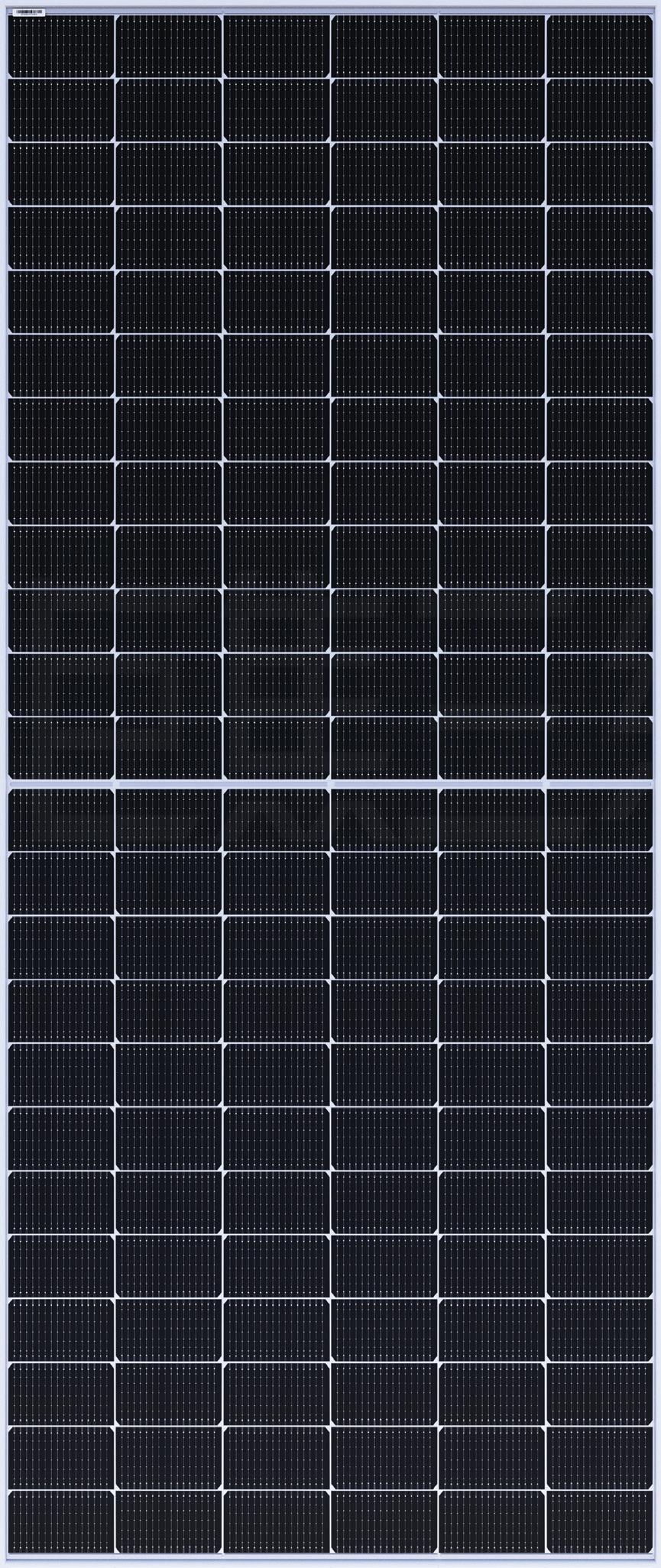

RELIABLE PARTNER WITH TOP PERFORMING PV MODULES
Boviet Solar brings together financial stability, Tier 1 bankability, technical know-how, manufacturing excellence, supply chain transparency and topperforming PV technology that you can trust.


“Top Performing PV Modules”“Tier 1 Module Manufacturer”


| MINNEAPOLIS,
MAY 6-9, 2024
MN






H LEADING THE C RGE








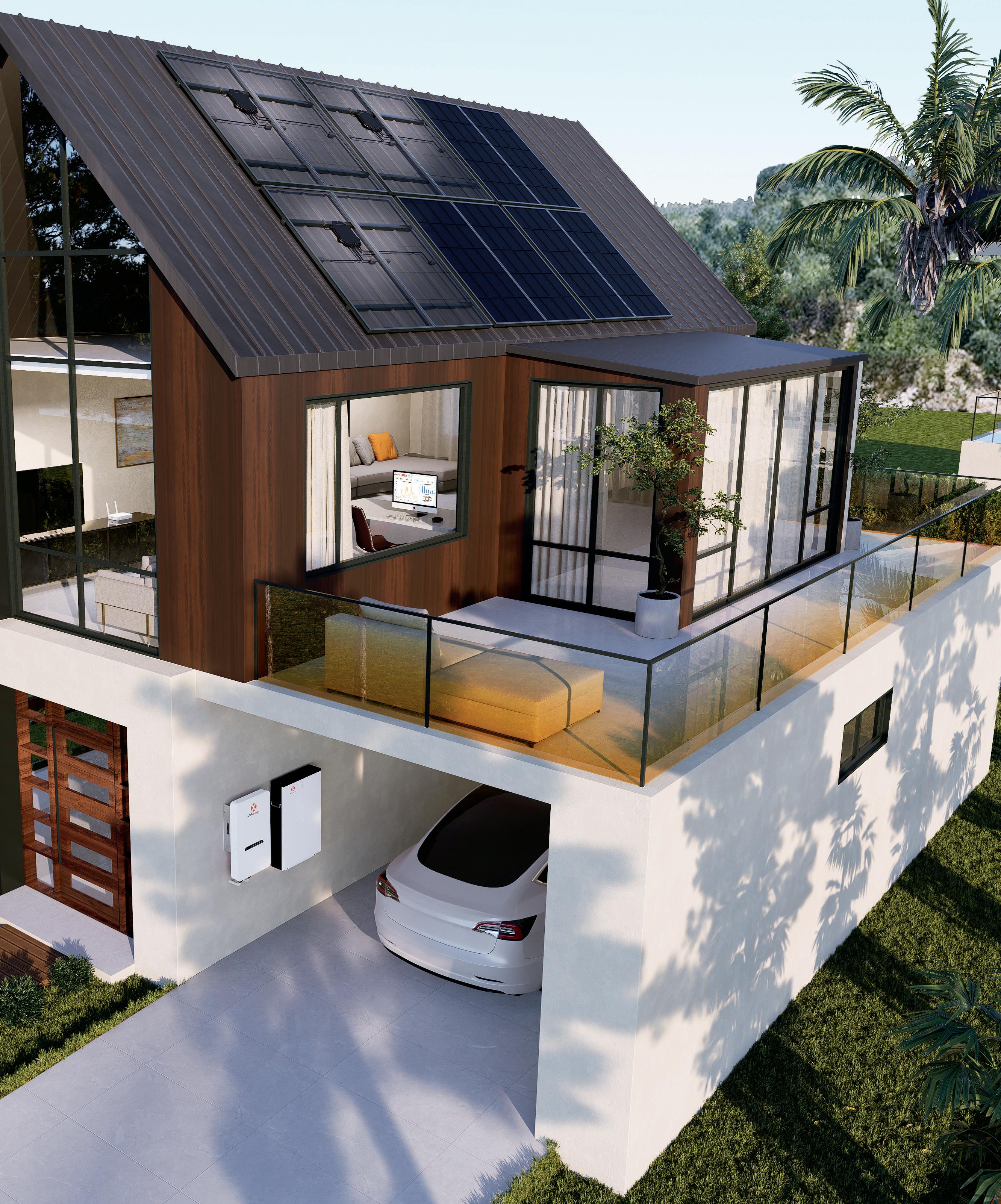



PUBLISHER
Courtney Nagle cseel@wtwhmedia.com
440.523.1685
EDITORIAL Editor in Chief Kelly Pickerel kpickerel@wtwhmedia.com @SolarKellyP
Managing Editor Kelsey Misbrener kmisbrener@wtwhmedia.com @SolarKelseyM
Senior Editor Billy Ludt bludt@wtwhmedia.com
@SolarBillyL
CREATIVE SERVICES & PRINT PRODUCTION Senior Graphic Designer
Mariel Evans mevans@wtwhmedia.com
FINANCE Controller Brian Korsberg bkorsberg@wtwhmedia.com
Accounts Receivable Specialist Jamila Milton jmilton@wtwhmedia.com
MARKETING
VP of Digital Marketing Virginia Goulding vgoulding@wtwhmedia.com
Webinar Manager Matt Boblett mboblett@wtwhmedia.com
ONLINE DEVELOPMENT & PRODUCTION
Web Development Manager
B. David Miyares dmiyares@wtwhmedia.com
Digital Media Manager Patrick Curran pcurran@wtwhmedia.com
CUSTOMER SERVICE
Customer Service Manager
Stephanie Hulett shulett@wtwhmedia.com
Customer Service Representative JoAnn Martin jmartin@wtwhmedia.com
Customer Service Representative Tracy Powers tpowers@wtwhmedia.com
Customer Service Representative Renee Massey-Linston renee@wtwhmedia.com
Customer Service Representative Trinidy Longgood tlonggood@wtwhmedia.com
Why tariff court cases are everyone’s problem
Never did I think so much of my career covering the solar industry would involve reading hundreds of pages of documents filed in federal courts. One minute I’m poring over the details of the latest midterm review of Sec. 201 trade tariffs on solar panels, and the next I’m going cross-eyed over lawyer lingo on anti-dumping claims in the Court of International Trade. The most visible part of a solar array, solar panels are also the most talked about product by many legislators and federal departments.
Here’s what I have gleaned from all the reports: imported solar panels are cheap and getting cheaper, and it’s making it difficult for the burgeoning U.S. solar manufacturing market to compete. Those facts are obvious across the board; how the federal government reacts to this will continue to play out in courts this year.
Since 2018, some form of tariff has been placed on imported solar panels under Sec. 201 of the Trade Act of 1974, which allows the president to impose duties on imports if they are causing serious injury to the U.S. industry. All imported monofacial solar panels in 2024 have a 14.25% tariff. If imported solar panels have a higher taxed price, more modestly priced American-made solar panels should be more attractive to U.S. buyers.
U.S. manufacturers say this safeguard is still necessary through 2026, because they still find it difficult to compete with cheap imports. A huge surge of imported solar panels (mostly bifacial products, which do not come with Sec. 201 tariffs) has entered the country in the last two years, contributing to a surplus of 20 GW of panels sitting in warehouses. A lawsuit in the Court of International Trade says this influx is due to a pause in antidumping/countervailing duty (AD/CVD) collection on imports from Southeast Asia. Panels are coming in at sub-20¢/W pricing, and if they were met with the AD/CVD rate the Dept. of Commerce deemed necessary, perhaps the country wouldn’t have such a surplus of cheap panels. Perhaps U.S. manufacturers wouldn’t be rethinking their production plans before even starting their new assembly lines.
The wheels of justice turn slowly, but the solar industry is moving at breakneck speed. Hopefully the president and the courts find a solution to this import problem soon so the domestic solar panel manufacturing market can finally, finally get off the ground. I really want to get back to reporting on good news and seeing smiling faces at factory ribbon cuttings. Until then, you know where to find me — glasses on, documents at 150% zoom, writing on solarpowerworldonline.com SPW


FIRST WORD STAFF 4 SOLAR POWER WORLD MARCH 2024 www. solarpowerworldonline .com
Editor in Chief kpickerel@wtwhmedia.com
Kelly Pickerel

Performing proactive or reactive O&M?
PV technicians working across a range of O&M activities can rely on the Megger tools when performing extremely critical jobs like ground-fault testing.

DLRO2X
Digital Low Resistance Ohmmeter
Provides technician with a way to test to IEC62446 standard for the continuity of bonded conductors.

MIT2500
Insulation Resistance Tester
Perfect for segmenting out different sections of the array to identify ground fault locations.
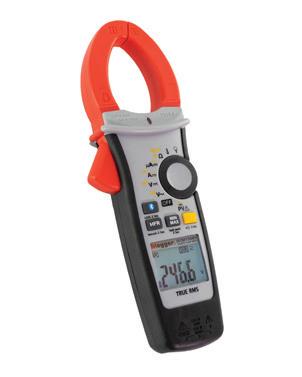
DCM1500S
Digital Clamp Meter
Your go-to instrument for ground-fault locating. Check three points from line to line and use those points to locate the fault.

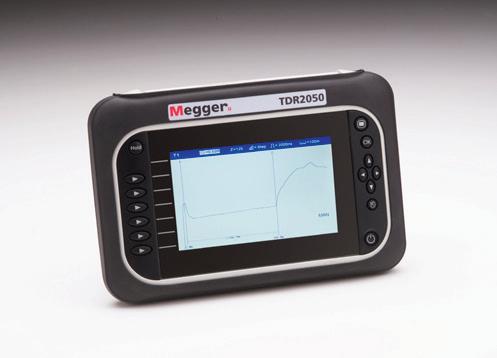

TDR2050
Time Domain Reflectometer
This two-channel fault locating instrument can be used on the ac side of a PV system. Its step function is used to improve detection of near-end faults.
DET2/3
Digital Earth (Ground) Tester
This instrument helps the technician accomplish the tests required on large or more complex ground systems. It’s designed to measure earth electrode resistance and soil resistivity.
Be proactive with your operations and maintenance with products from Megger.

Learn more about continuity testing in PV systems - scan the QR code to download our Solar Testing Guide or visit: us.megger.com/continuitytesting Visit us at NABCEP 2024 Booth 45/46
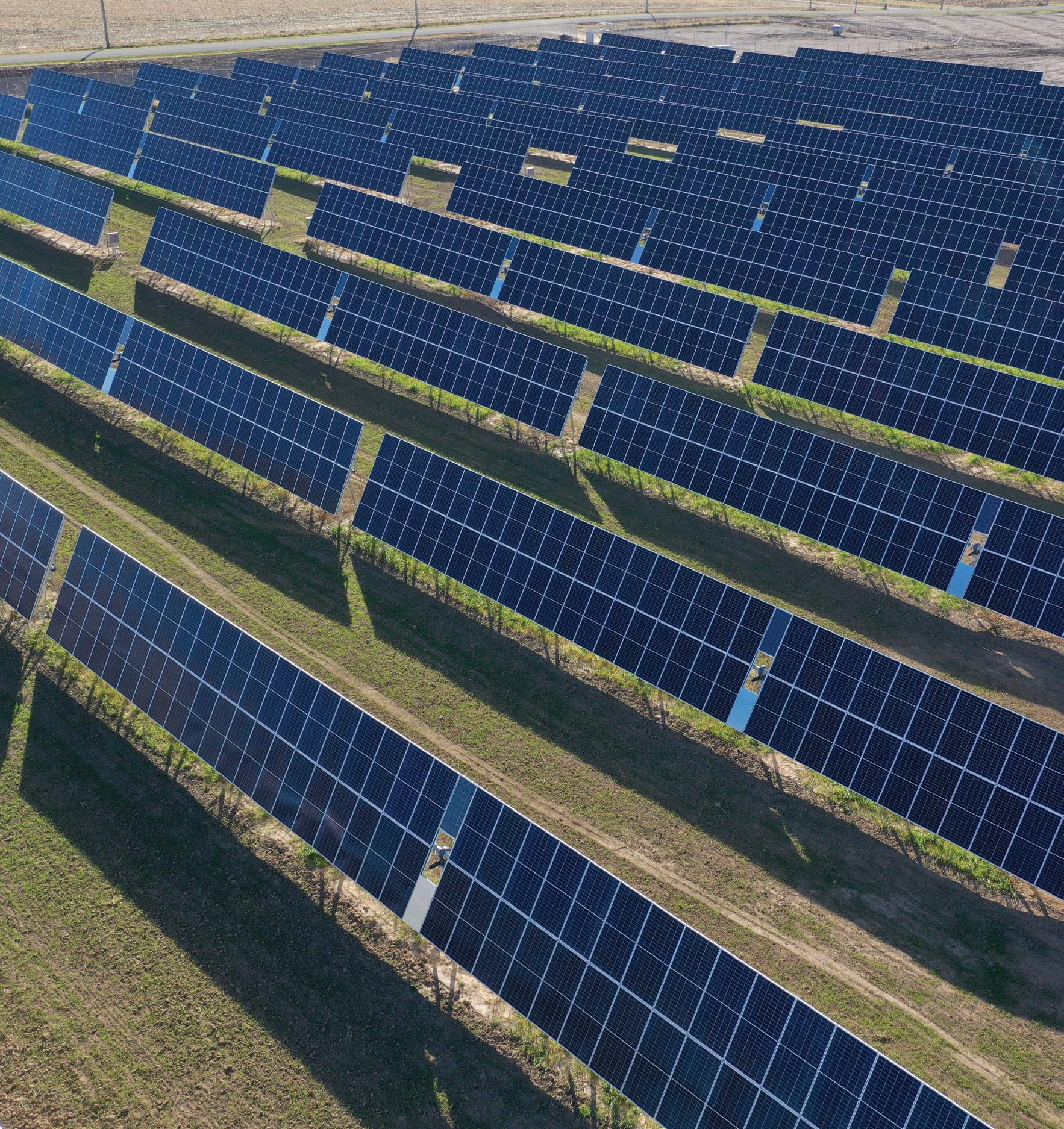
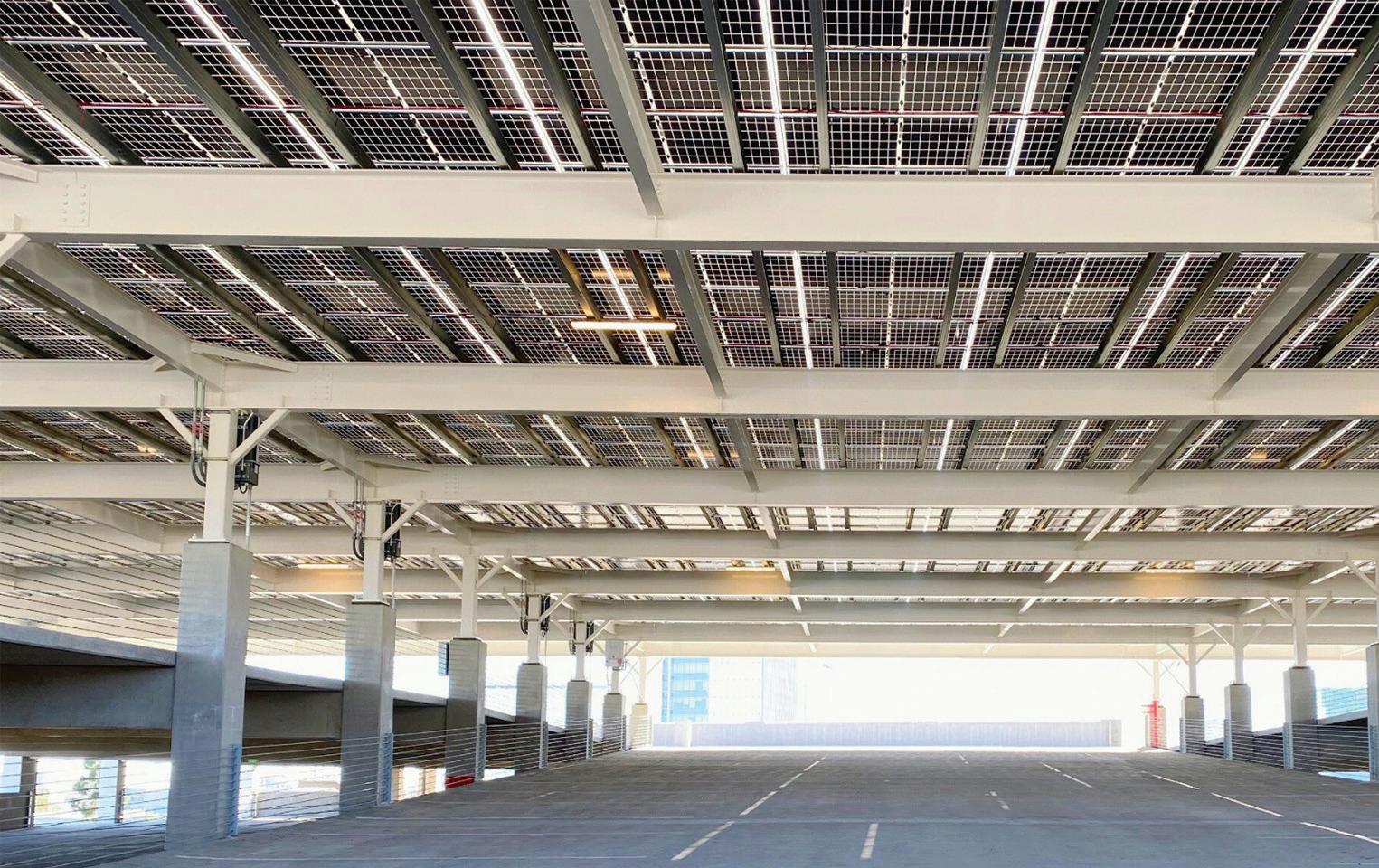
The community solar
is growing, and there is still plenty of room for more players. From subscription managers to contractors installing systems, we have more details in our market spotlight. Credit: Ampion


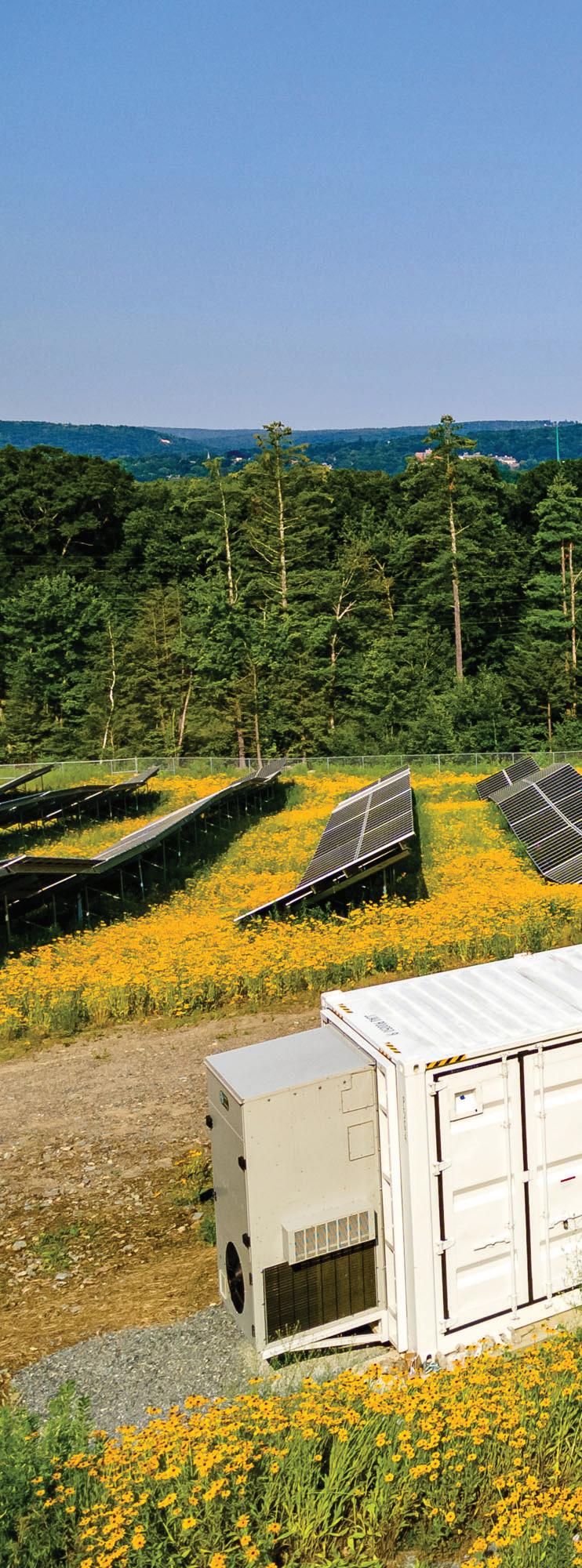
MARCH 2024 • VOL 14 NO 2 www.solarpowerworldonline.com
market
OPERATIONS MANAGING SUBSCRIPTIONS A look at the companies handling hundreds of community solar offtakers INVERTERS Grid-forming inverters will enable the continuing growth of solar 29 TECHNOLOGY MOUNTING Installing on buildings is common, but working on parking garages takes skill 20 STORAGE Energy storage is getting more community solar built 24 INSTALLATION PORTIONED PORTFOLIO Contractor splits community solar projects into pieces to meet state rules 12 POLICY LMI SUPPORT Community solar is a powerful tool for bringing solar to all 16 08 FIRST WORD CONTRACTOR’S CORNER AD INDEX 04 38 40 CONTENTS ON THE COVER 12 16 20 24 PANELS Once an industry staple, AC modules have disappeared from the U.S. market 26 SPECIAL SECTION: INSTALLATION Q&A SPW reached out to product suppliers and asked for their best installation tips. From residential roofs to utility-scale projects, we share insights into safety measures, solarspecific tools, BOS help and installation aids. | PAGE 33 6 SOLAR POWER WORLD MARCH 2024 www. solarpowerworldonline .com

QUEST RENEWABLES DELIVERS AWARD WINNING SOLUTIONS
|
@questrenewables
6.8 MW Barnstable County, MA
Featuring Quest Renewables Double Cantilevers and Long Span Truss
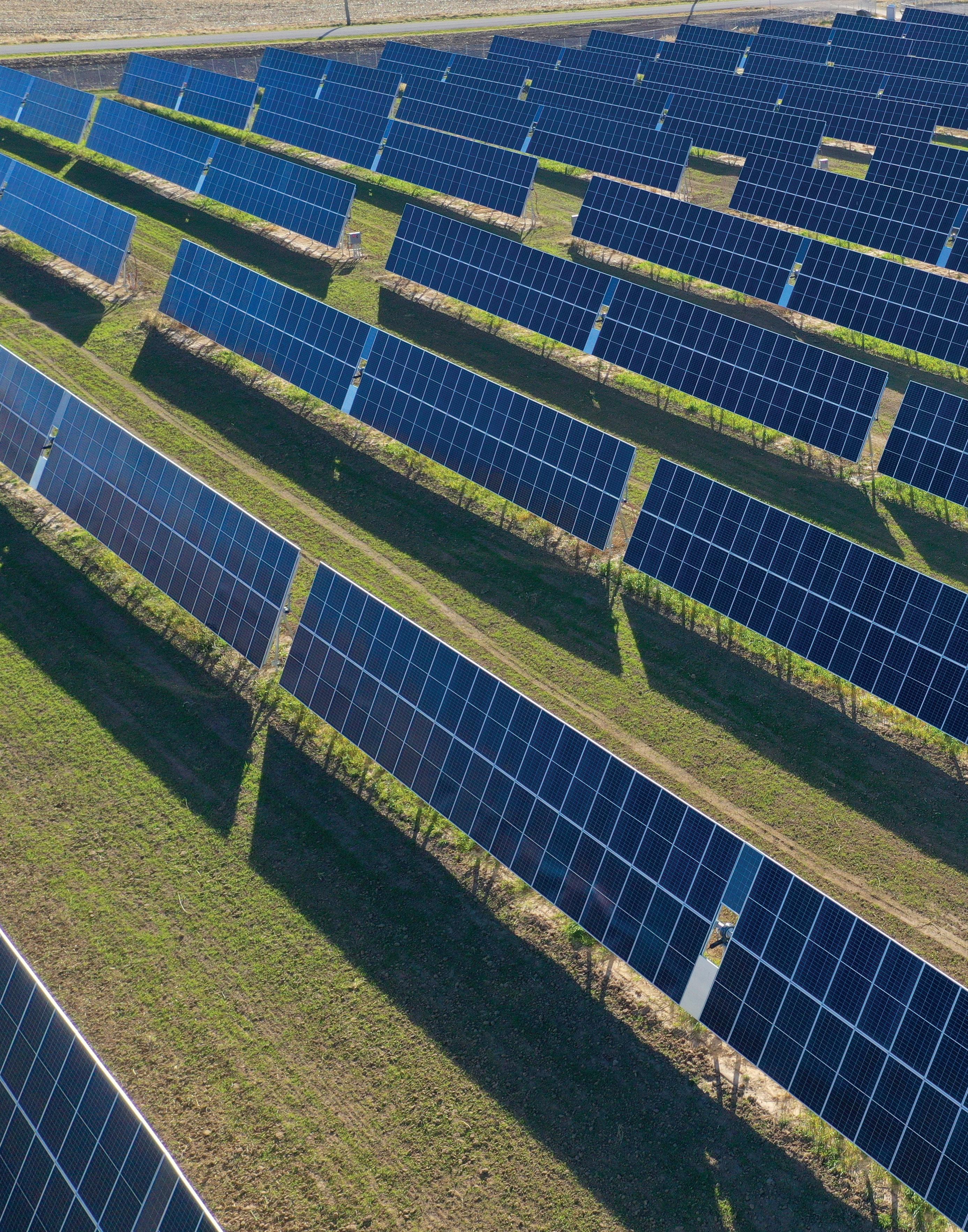
COMMUNITY How are SOLAR SUBSCRIPTIONS MANAGED?
8 SOLAR POWER WORLD MARCH 2024 www. solarpowerworldonline .com
LUDT | SENIOR
BILLY
EDITOR
Community solar projects have, perhaps, the most active lifecycle of any PV project post-construction because they are interacting with groups of subscribers instead of a single system owner. Management services have established procedures to connect subscribers to community solar systems and support them once enrolled.
Part of that support comes from working and integrating services with utilities. Community solar projects generate energy credits that apply to a subscriber’s utility bill that reduces their energy costs. To initiate those energy credits, community solar managers must acquire individual subscriber billing and meter data and integrate that with the utility’s billing system. System managers must contact utilities to confirm each subscription to a community solar project.
“When you’re integrating with these utilities, they don’t pave the road for you,” said Nate Owen, CEO and founder of Ampion, a community solar management service founded in 2014. “You have got to do whatever you can to get hold of the data you’re ultimately going to use to bill your customer.”
Some community solar contractors handle subscriber management themselves while others turn to third-party services like Ampion. The company primarily serves states in the Northeast with a growing presence
OPERATIONS
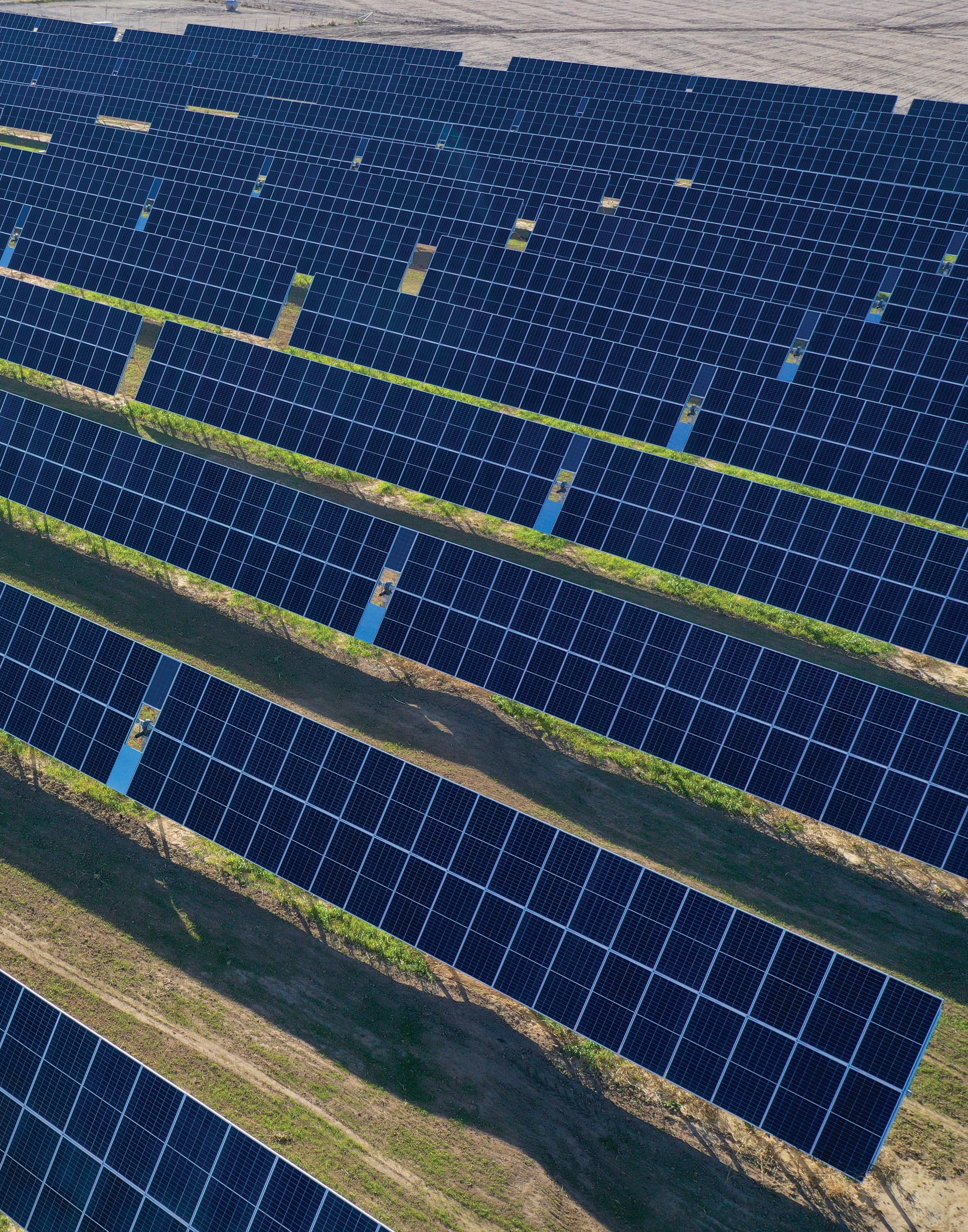
9 SOLAR POWER WORLD MARCH 2024 www. solarpowerworldonline .com
Ampion
out west. Ampion’s service, like other managers, connects subscribers in eligible states and regions to community solar projects, allotting a share of its output based on a utility customer’s energy consumption.
Subscribers pay the management service a fee, and the energy generated by their share of the community solar project applies to their utility bill.
“As the energy world becomes more distributed, and more third parties are contracting with consumers … you need an enterprise-wide software that’s fully secure and capable of managing the complexities of utility integrations, to manage customer relationships and to manage the revenue and the financials of these projects,” Owen said.
Community solar is growing in the United States, however, it isn’t universally known, so managers produce marketing
and educational campaigns, especially in communities new to the concept.
“Community solar is oftentimes a headscratcher for a customer,” said Erik Molinaro, SVP of customer experience and operations at Nexamp. “For us, there’s no fee to sign up. There’s no fees whatsoever. People feel like it could be too good to be true. You don’t have to pay me anything, you don’t have to do anything, but you’re going to get a discount.”
Nexamp both builds and manages community solar projects. PV arrays have operating lifecycles up to 30 years, so management companies will be serving subscribers on those systems for the duration. Nexamp tries to capitalize on that long relationship by working with municipalities to inform their citizens about community solar. Additionally, the company advocates
for community solar legislation in state legislatures to open new doors to shared PV.
All this marketing, educating and advocating is done in the hope that utility customers subscribe to these projects; and community solar managers staff entire customer service teams to help enrollees through the first steps of subscription and to answer any billing questions after they are subscribed.
Community solar management encompasses many different tasks, like working with utilities, educating the public and ensuring energy credits appear on a utility customer’s bill every month. As the U.S. community solar market grows, so will the demand for services capable of managing these many moving parts that ultimately make solar PV a little more accessible to the public. SPW

OPERATIONS 10 SOLAR POWER WORLD MARCH 2024 www. solarpowerworldonline .com
Ampion


© 2024 Briggs & Stratton, LLC. ®
INSTALLATION

12 SOLAR POWER WORLD MARCH 2024 www. solarpowerworldonline .com
Stakeholders tour the first completed solar project in LBA Logistics’ community solar portfolio. SRE
CONTRACTOR SPLITS FOUR PROJECTS INTO SEVEN
TO ADHERE TO COMMUNITY SOLAR RULES IN MARYLAND
Summit Ridge Energy (SRE), a commercial solar contractor from Arlington, Virginia, will soon complete construction of a 17-MW community solar portfolio of seven projects — at least, they’re considered that by interconnection standards — built across four different rooftops in Maryland.
All four sites are commercial buildings owned by industrial real estate operator LBA Logistics. Working with Black Bear Energy, an agency that represents institutional property owners wishing to build on-site renewables, LBA started the process of adding solar PV to its buildings in 2019.
“It, candidly, took them a long time to find an asset where all the pieces lined up,” said Victoria Stulgis, SVP of client operations at Black Bear Energy. “Everything from the roof age makes sense, it’s in a good solar market, there’s no [joint venture] partners or lenders that don’t want solar, they’re planning to hold the asset long enough, they have roof rights. That’s one of the reasons why I’ve loved working on these Maryland solar projects. It is rare to have four assets in one market with one party where you can get to the scale of 17 MW.”
The projects are split between the cities of Rosedale and Belcamp. The first to be completed was a 4.8-MWDC array atop an industrial building on Quad Avenue in Rosedale, which had a ribbon-cutting ceremony back in August 2023. Then in Belcamp, there is a 2.8-MWDC array on Mercedes Drive, and 2.3-MWDC and 7.55-MWDC projects on neighboring buildings on Appliance Drive.
While built as single units, two of these projects technically have multiple interconnection points. The 4.8-MW array on Quad Avenue and 7.55-MW project on Appliance Drive have two and three interconnection points, respectively. This is because Maryland’s Community Solar Pilot Program had a rule that community solar projects could not exceed 2 MWAC capacity, so SRE worked around that by planning multiple interconnection points at these sites.
While waiting in interconnection queues isn’t a quick process, SRE finds working on industrial rooftops faster than on the ground, because there are fewer regulatory processes to complete. The company has never worked on a single portfolio of projects as large as LBA’s, but at any given time, SRE is constructing multiple commercial
13 SOLAR POWER WORLD MARCH 2024 www. solarpowerworldonline .com
BILLY LUDT | SENIOR EDITOR
projects. Nate Greenberg, VP of business development at SRE, admits that it’s more expensive to build on roofs, but not needing to pull special use permits, conduct wetland studies or other testing found on ground-mount projects makes up for it.
The company uses a standard set of components on each array, including this community solar portfolio. SRE installs Qcells solar modules, SolarEdge inverters and one of two sets of racking depending on the style of roof, either PanelClaw or Opsun.
“I think that’s the biggest thing I’ve learned in the last five or six years of doing this. The actual construction on the roof is the easiest part,” Greenberg said. “It’s the coordination on the ground that a lot of developers don’t really think about until they get into it.”
The Quad Avenue and second Appliance Drive projects have tenants that are active retail suppliers, with product shipments moving in and out of the buildings constantly. The arrays were being built through the holiday season, and SRE had to coordinate its own deliveries while truckloads of liquor, wine and cosmetics were frequently shipping out from warehouses below.
Untapped community solar potential on industrial properties
In 2022, global investment firm Morgan Stanley published a report on the benefits of installing solar on industrial properties titled “Buildings & Parking Lots: Ready for a Recharge?” The report claims that commercial properties in the United States alone have the potential to host 328-GWDC of solar.
But this segment of the market is still in its early days, Stulgis said. Black Bear Energy maintains leaderboards ranking real estate investors based on how much on-site solar they’ve installed. Once LBA’s 17-MW portfolio of projects is fully energized, the company will rank among the Top 20 companies on that list.
There are common roadblocks to developing solar on industrial roofs, like roof rights and the terms of tenant leases, but Stulgis said community solar is a means for property owners like LBA to scale solar growth. A community solar array on a commercial roof sells energy back to the utility and people subscribed to the project, and not directly to tenants.
“Typically, by the nature of being on an industrial roof, the solar is actually

INSTALLATION 14 SOLAR POWER WORLD MARCH 2024 www. solarpowerworldonline .com
Brian Dunn, COO and board member of SRE, and Perry Schonfeld, principal and COO of LBA Realty, at the Quad Avenue project ribbon cutting ceremony. SRE
getting delivered in areas where there’s a larger electricity demand and there’s a much better value to the customer of a utility if solar projects are being generated close to load vs. in the middle of nowhere and having to pay to transport that electricity and having losses over the line,” Stulgis said.
Greenberg said that despite being an underserved market, community solar has unlocked commercial rooftop projects. He expects this segment of community solar to continue growing where these projects can be built. And after five years of development, LBA’s community solar portfolio of four solar sites composed of seven different projects will soon produce power and add to that growth.
“The cool thing about these rooftop projects is you’re building them in communities that we’re serving. You

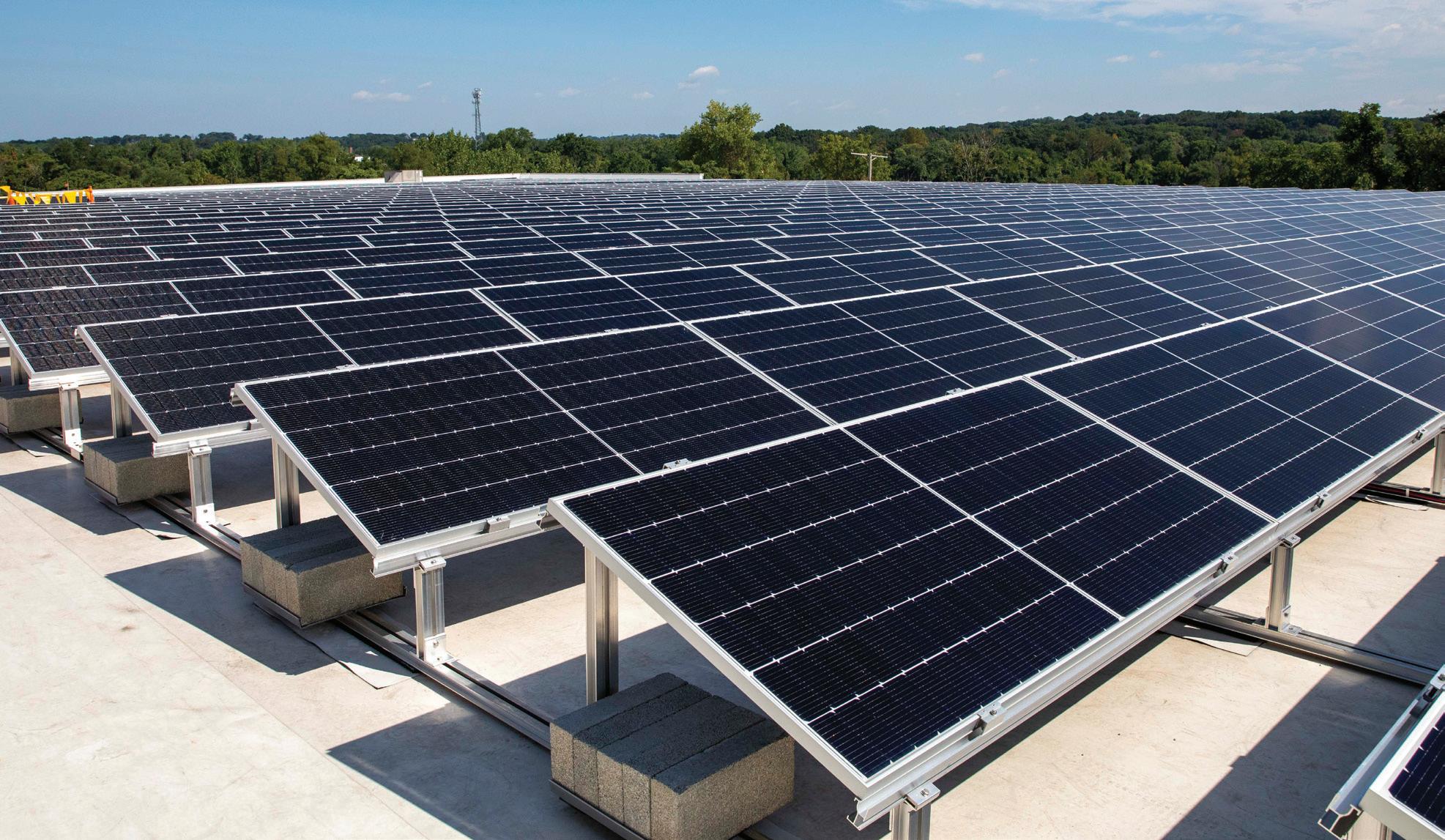
look around and you see there’s not only other buildings, but houses and businesses and restaurants,” Greenberg said. “It’s up on an existing roof, and
we’re able to benefit the people of that community economically and environmentally. It goes back to why we started Summit Ridge Energy.” SPW


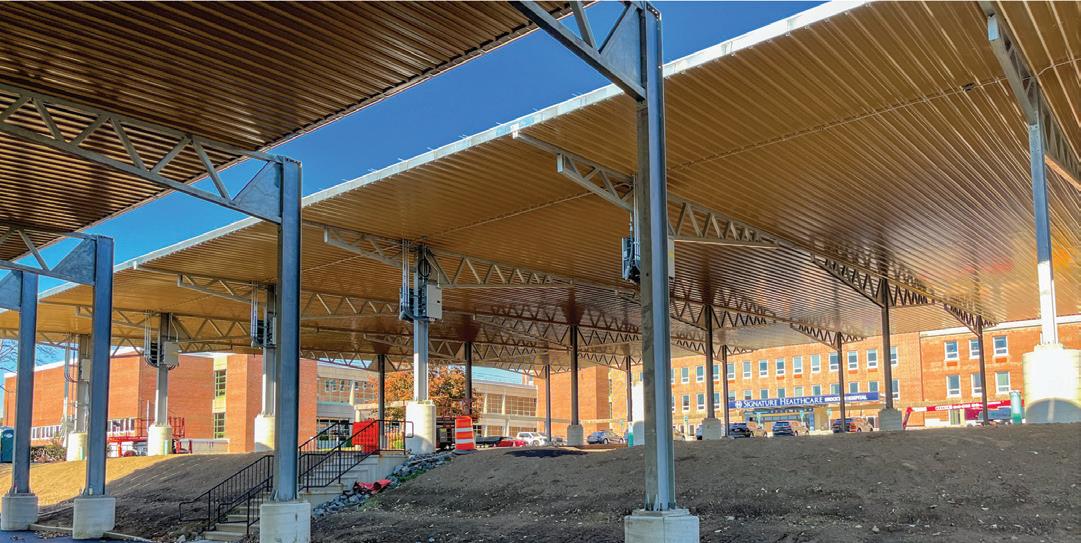

INSTALLATION 15 SOLAR POWER WORLD MARCH 2024 www. solarpowerworldonline .com SRE 100% Made in USA Commercial & Utility Scale Solar Racking Design | Manufacturing | Installation Solar Carports, Ground Mounts and Balasted Roof Mounts Sales@solarmounts.com www.solarmounts.com 844.757.7225 300 Woolley Drive Marshall, MI 49068

COMMUNITY SOLAR: COMMUNITY SOLAR:
A powerful tool for expanding lowincome access to solar benefits
A powerful tool for expanding lowincome access to solar benefits
16 SOLAR POWER WORLD MARCH 2024 www. solarpowerworldonline .com

Berlyn Hubler, community solar program manager at nonprofit Energy Outreach Colorado, has seen the impact of community solar on low- and moderateincome (LMI) communities firsthand.
“We often hear that subscribers are excited to pay their bill because it’s affordable,” she said. “These households no longer need to make tough decisions related to their energy use. They can turn on their air conditioning and not worry about affording food or medicine next month.”
Many states have only recently enacted policies and practices linking community solar and lowincome communities. It will take time for benefits like those seen in Colorado to become apparent in significant numbers. However, community solar’s ability to impact Americans in need is undeniable.
Community solar and low-income communities
Three-fourths of U.S. households cannot install rooftop solar, whether from unsuitable roofs or lack of homeownership. With 50 million people considered low-income and having a high energy burden, community solar becomes an accessible way for these families to save money on their electricity bills while supporting solar energy.
Community solar developer Standard Solar’s Megan Byrn, VP of business development, and Trevor Laughlin, senior analyst of policy and regulatory affairs, said that community solar evens the playing field for those taking advantage of clean energy. They said community solar enables LMI households to save money while stimulating local economies, strengthening the power grid and
17 SOLAR POWER WORLD MARCH 2024 www. solarpowerworldonline .com
POLICY
| FREELANCE CONTRIBUTOR
SARA CARBONE
Pivot Energy
POLICY
reducing carbon emissions “in places where environmental classism has been rampant for generations.”
Community solar is democratizing solar energy access and promoting equity, and industry stakeholders are focusing on this needed community connection.
Developers promote equity in community solar
Some solar developers are committed to developing projects that benefit communities in need. Standard Solar often ensures its projects will benefit LMI populations. Then during project commissioning, the company eliminates barriers to LMI subscribers, such as registration or cancellation fees.
“Initially, we confirm market and regulatory discount guidelines to ensure we’re providing the guaranteed savings available to LMI communities,” said Byrn and Laughlin jointly. “Then we consult with local planning and zoning authorities as we move through the engineering and construction phases to make sure we comply with regulations.”
Developer Pivot Energy, one of the largest low-income providers in the community solar space, works with community-based organizations to develop trust with LMI families.
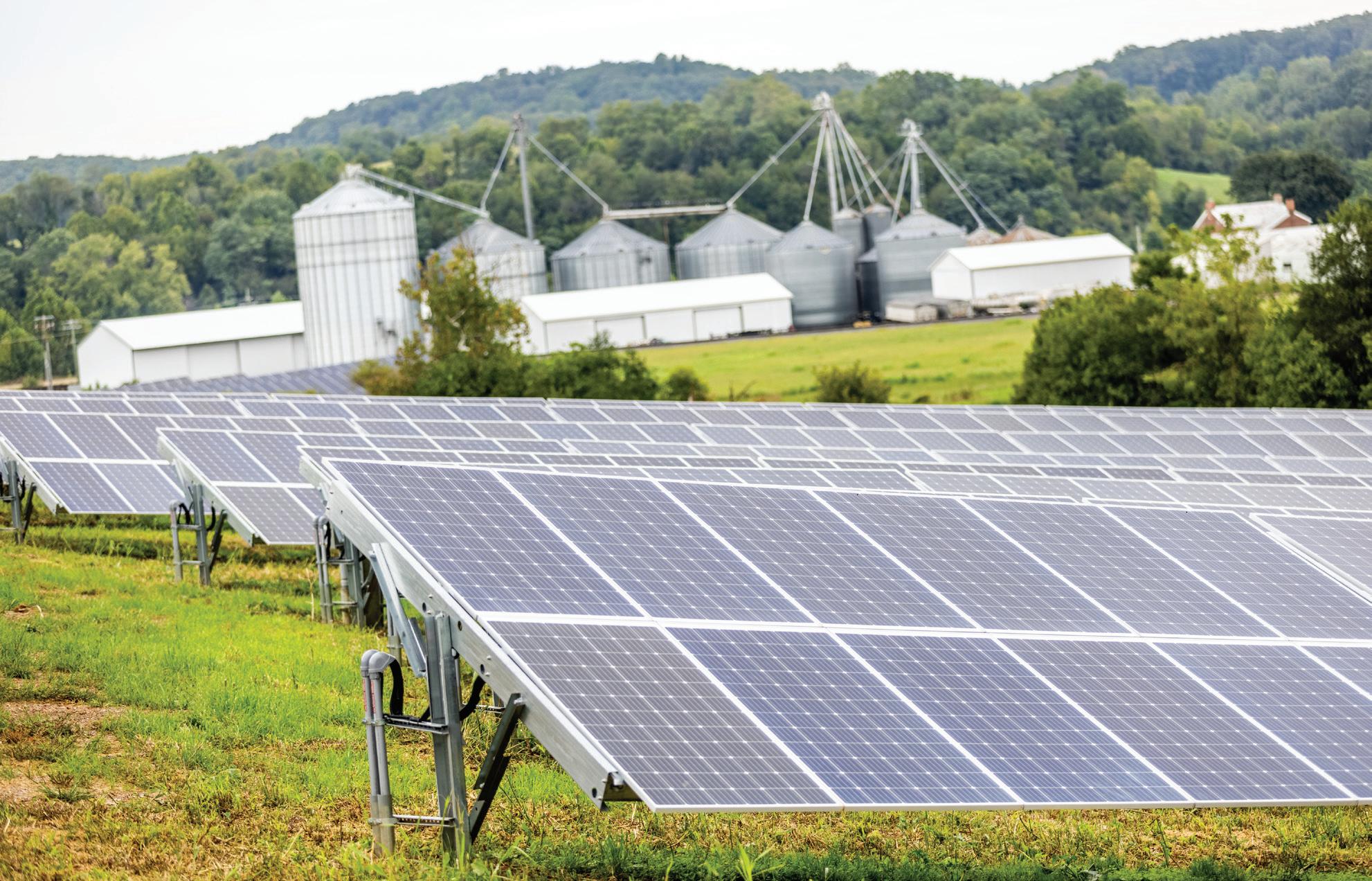
Pivot partnered with Energy Outreach
Colorado to offer subscriptions to Pivot’s community solar gardens paired with energy bill assistance.
“As developers, it is our responsibility to make community solar subscriptions as meaningful as possible,” said Annie Lappée, Pivot VP of strategy and impact. “We need to also look for innovative partnerships with utilities and corporations looking to purchase renewable energy credits to help us offer the best build discount rate

and simplify the subscription process.”
Kate Larkin, director of community solar for developer OneEnergy Renewables, said that communityfocused groups have been a big help for OneEnergy’s community solar projects in Minnesota. The company created a unique partnership with a local cooperative association to ensure solar subscribers enjoyed direct ownership and profit sharing as well as typical subscription savings.
“It’s critical to continually engage local community groups to support and share community solar’s cost-saving and environmental benefits. Ensuring that we can save real people real money is the only way our projects are successful,” she said.
The vital role of policy
Of the 24 states with community solar programs, just 14 have a lowincome participation provision. Some states have LMI capacity carveouts, while others try to align low-income assistance programs so community solar is positioned as another form of assistance, like Pivot’s initiative with Energy Outreach Colorado.
Some of the more successful programs, said Stephanie Burgos-Veras,
18 SOLAR POWER WORLD MARCH 2024 www. solarpowerworldonline .com
Standard Solar Standard
Solar
senior manager of equity programs for the Coalition for Community Solar Access (CCSA), have selfattestation qualification processes and consolidated billing. Minnesota and Maryland recently added consolidated billing to their programs. NREL has identified incentives like financial subsidies and voluntary utility-led programs as important for equitable community solar development.
Community solar programs don’t happen without industry advocates like Standard Solar, Pivot Energy and OneEnergy Renewables educating and promoting this growing solar market. Advocacy group Vote Solar has been especially vocal in its support of community solar, and Vote Solar policy managing trio Farudh Emiel, Marta Tomic and Nathan Phelps said the group “leverages strategic partnerships and engages in rule making, implementation and program review processes to ensure that community solar initiatives are effectively executed and equitable.”
The organization also contributed to the creation of the “Low-Income Solar Policy Guide,” a resource for policymakers, community leaders and others.
This focus on equity has entered the federal conversation, too. The IRA has two programs focused on increasing low-income participation and community solar. One is the low-income bonus credit program, which allows community solar developers access to a higher investment tax credit if they develop projects that serve low-income customers at a meaningful level. The other is Solar for All, a $7 billion grant program to boost equitable access to both rooftop and community solar.
Still steps to take
Despite these positive developments, Richard Keiser, founder and CEO of community solar subscription manager Common Energy, said that for community solar benefits to reach low-income communities at a large scale, they need to be structured
differently. The most ideal way, he said, is for utilities to automatically enroll low-income households that qualify, because this would both simplify the enrollment process and ensure that the higher savings rates reach those who need it most.
Keiser also believes that larger housing authorities should qualify for community solar programs and be permitted to directly push savings benefits to customers.
“This is much more effective than requiring individual enrollment of lowincome households, which will ultimately limit the programs,” he said, noting that New York’s policies recognize this. “Unfortunately, the vast majority of those advocating for the low-income segment have no idea how to implement the programs for large-scale impact.”
The future of equitable access to community solar
Pivot’s Lappée noted that only 12% of community solar subscribers in America come from LMI households.
“Community solar is ready to serve low-income customers, but we have only just started to scratch the surface of its potential,” she said.
There is much the solar industry can do to help equitable community solar realize its full potential, though it will not be simple.
“Serving low-income customers is not the path of least resistance,” said CCSA’s Burgos-Veras. “It requires commitment from developers, legislatures, utility executives and community-based organizations to all work together to lower existing barriers.” SPW
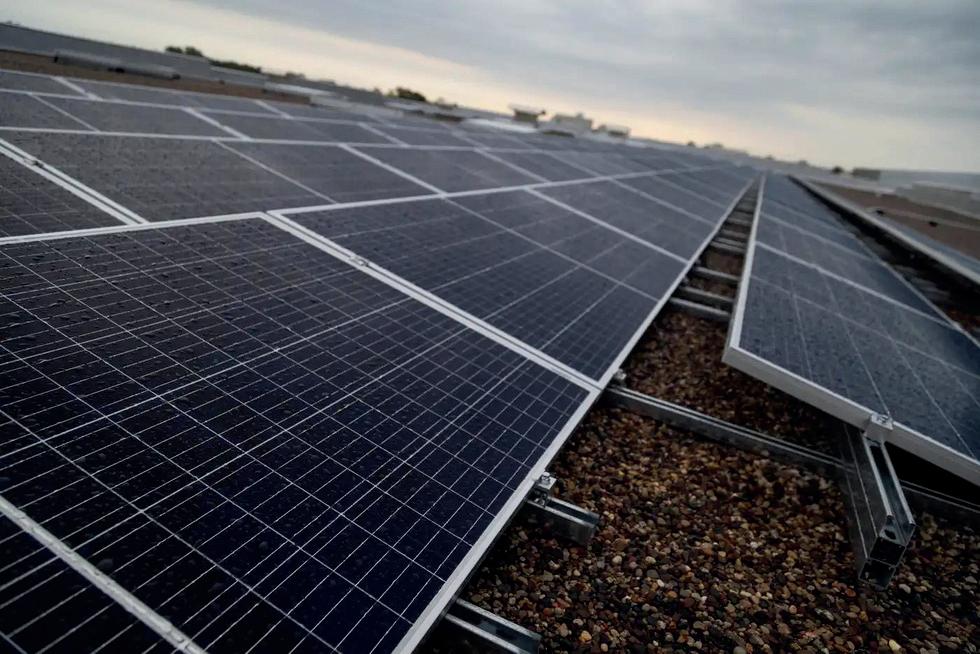
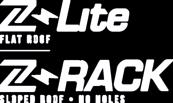






POLICY MARCH 2024
MAKERS OF Z-RACK BENEFITS Zero Penetrations Roof Agnostic Reduce Install Time No Fossil Fuels UL2703 Listed Wind and seismic tested to ASCE CONTACT US 763.404.7580 sales@mysolarpod.com www.mysolarpod.com www.zsolarsolutions.com E474752
TECHNOLOGY
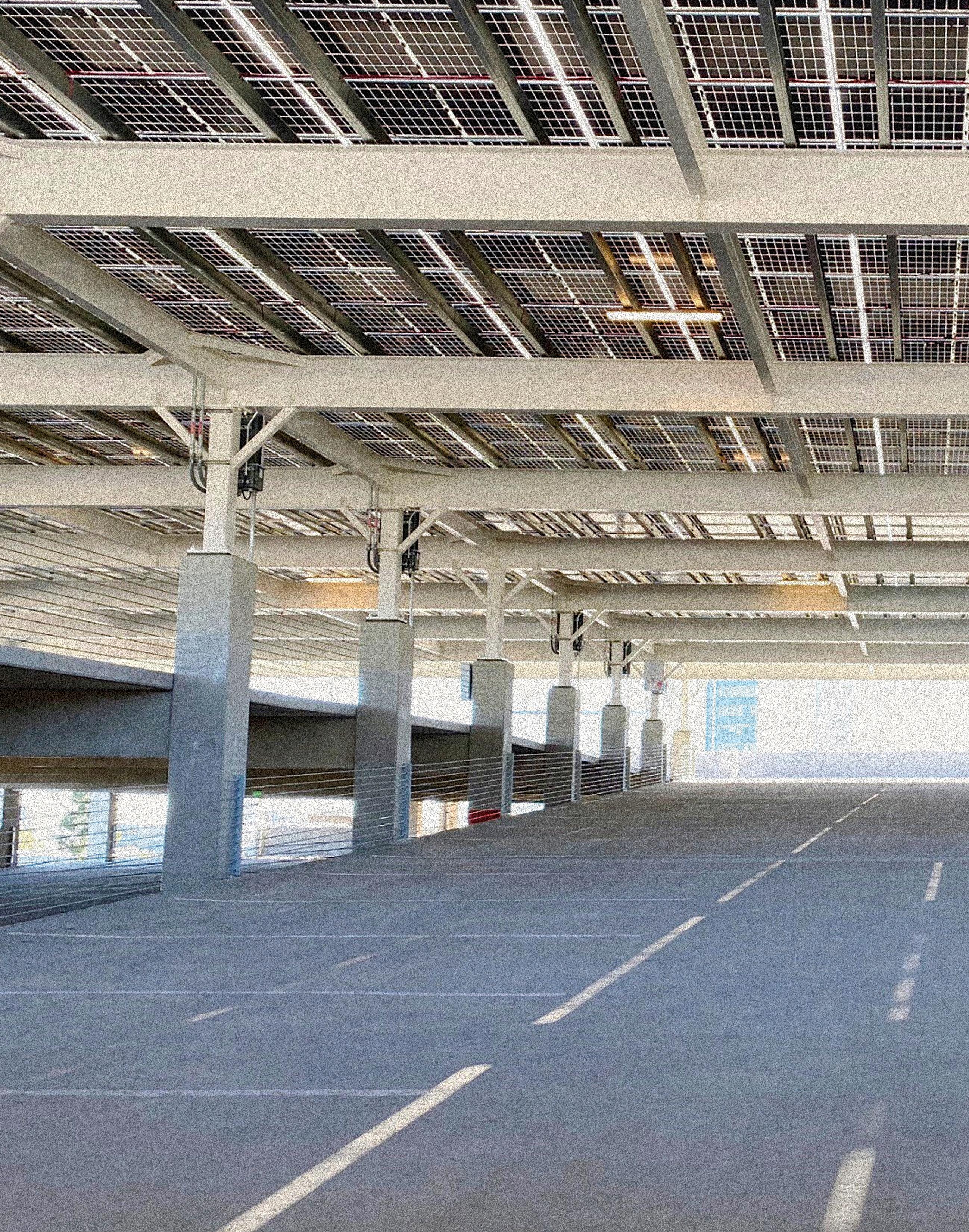
Mounting solar’s heaviest racking option atop parking decks
20 SOLAR POWER WORLD MARCH 2024 www. solarpowerworldonline .com
decks
Installing solar on existing structures is a common industry practice, however, the PV projects found on multilevel parking garages are unique in their sheer weight of materials and how they are installed. The planning, design and methods to installing carports — canopy structures composed of heavy steel foundations that can host long spans of solar modules — require some additional foresight and specialized machinery to properly mount to the concrete exteriors of parking garages.
Solar carports are often found in parking lots where they provide renewable energy for the property owner and shading for commuters. This developed site does little more than organize vehicles. The same rationale applies to parking garages, but with added considerations for hauling or hoisting solar components multiple stories above the ground.
The array design differs between a parking lot and parking garage, because the latter can have ramps and other angled planes on its top section, and carport foundations will mount to concrete surfaces and not the ground or blacktop of a parking lot.
The common mounting foundation for these types of projects is an anchor bolt that is drilled and possibly epoxied into a base plate attached to a surface on the parking deck, be it the floor, stem wall or structural columns. Contractors core into the mounting surface with a concrete drill and clear the pilot hole of dust and debris before filling it with epoxy and driving in the anchor bolt through the base plate, which will hold the carport’s beam foundations.
“You’re using an all-thread [anchor], and it can be drilled anywhere from 1 ft into the existing pedestal, and I’ve seen as much as 2 and 3.5 ft,” said Bobby Bonfanti, eastern division manager at M Bar C, a turnkey carport manufacturer and installer. “You’re coring into this existing pedestal and there’s really tight tolerances and specifications for how you core it, how you clean it and how you place the epoxy and set the anchors.”
Determining if a parking deck is suited to host a solar carport requires approvals from structural engineers on both the building and the solar aspects of the project. During building inspection, it’s necessary to use specialized scanners to see what’s beneath the surface of the building. Solar carport manufacturer Quest Renewables does three different scans for a parking deck project: a laser scan, ground penetrating radar scan and a rebar scan, because “asbuilt” building plans do not always provide accurate schematics for interior supports like rebar.
“You really need to do your own forensics,” said Finn Findley, CEO of Quest Renewables.
Contractors can encounter degrading building conditions and might need to reinforce the structure with

21 SOLAR POWER WORLD MARCH 2024 www. solarpowerworldonline .com
M Bar C Construction
BILLY LUDT | SENIOR EDITOR

elements like metal saddle plates to strengthen mounting points.
“A big recommendation from us is doing a feasibility study,” Bonfanti said.






“It’s a low-cost option to go through the existing plans, how we will connect a structure to the existing parking garage and then coming up with some

stock code:301278








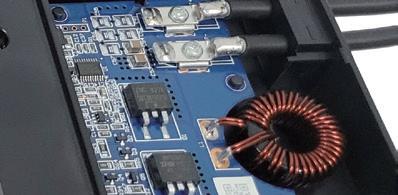
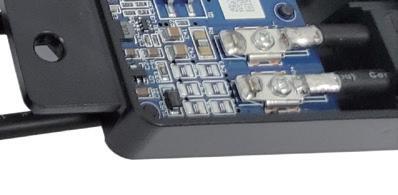

preliminary sizing and details to help us understand the complexity and cost of the structure that we’re going to build.”
Project timelines for solar carport projects on parking decks will likely be longer than those installed at ground level because they require additional coordination for handling the equipment and materials necessary to build them. Bonfanti said a 500-kW carport requires five to six truckloads for heavy steel and purlins, not including other components like solar modules. Then it’s a question of how to get those components to an elevated worksite.
If they cannot be taken by vehicle to the roof, components must be hoisted by crane, and the contractors must coordinate — and contend — with neighboring buildings, local traffic and the possibility that the garage owner wants to keep part of it in operation through construction. Then the heavy machinery used to move components might weigh too much to be on that worksite.
“There are calculations that you sometimes have to give to the original structural engineer to prove for the weight of the equipment that’s going up there,” Bonfanti said. “Sometimes you have to use the outriggers and platforms that disperse the load in a more spread-out fashion.”
Installing solar carports atop parking decks is a more specialized project than those found in parking lots, but this segment of the market is growing in popularity. Findley said about twothirds of Quest Renewables’ individual projects are built on existing parking garages. They just require some more heavy lifting.
“I don’t want to scare anybody off, but, man, be prepared,” he said. “You really need to know what you’re doing, and if you don’t know what you’re doing, hire somebody who does, because it can be really difficult, really slow, and usually that means it’s also expensive, so we’re trying to help people avoid that.” SPW
MOUNTING TECHNOLOGY 22 SOLAR POWER WORLD MARCH 2024
market@qc-solar.com.cn +86 187 2403 3480 World’s Leading Manufacturer of PV junction boxes, RSD boxes, Cables, PV and ESS connectors QC Solar Corporation
M Bar C Construction

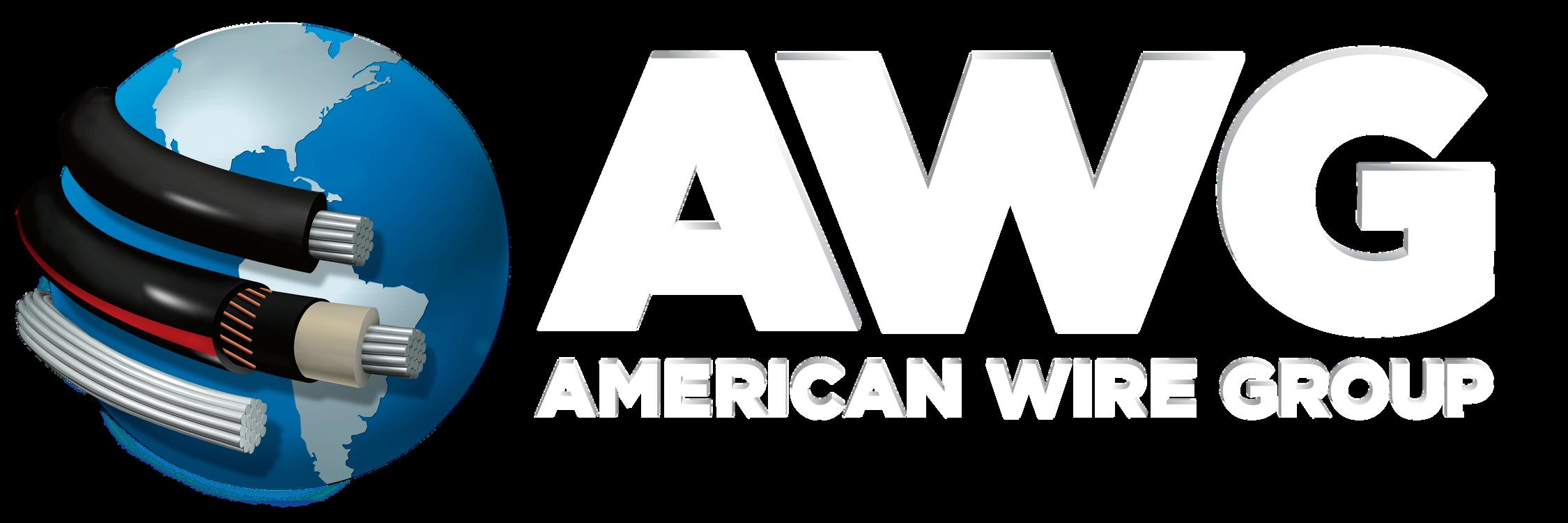



Energy storage boosts community solar adoption nationwide
Community solar, a “solar for all” model that allows businesses and individuals to subscribe to electricity credits generated by locally sited solar projects, is a quickly growing market segment in the United States. Midway through 2023, the installed community solar market reached nearly 6 GW, with projects in 41 states and Washington, D.C. A helpful driver for even more community solar to get adopted nationwide might be just adding energy storage.
Pairing energy storage with community solar doesn’t have much impact on the solar project’s design or installation, but it can push the solar project over the finish line. Georgina Arreola, VP of policy for community solar customer manager Perch Energy, said storage helps community solar by improving project economics through
additional incentives from utilities and states.
“Certain states enable projects to receive compensation for releasing storage electricity at peak demand times (peak shaving). This compensation impacts financing and revenues, which makes a difference,” she said. “Pairing community solar projects with storage helps to improve grid resiliency even more than local generation would alone. Consequently, many markets encourage paired storage with additional incentives.”
Solar contractor Nexamp, ranked No. 1 on the Community Solar market segment of the 2023 Top Solar Contractors List, said incentives for energy storage let Nexamp accept more subscribers on its community solar facilities located in the Northeast and Midwest.
“In any given market, our offering to community solar subscribers is pretty consistent. But the energy storage revenues will help the overall financial picture of the project and allow us to move it forward,” said Rob Ritchie, energy storage director at Nexamp. “You might have a solar-only project that might not benefit, but if you add storage, you add the revenue streams in multiple programs that can enable projects to go forward and unlock those community solar benefits.”
Many markets are moving toward making community solar + storage a requirement. For example, California has a proposed net value billing tariff program that would require community solar projects to have a minimum four-hour battery attached. Besides the monetary incentive benefits to the
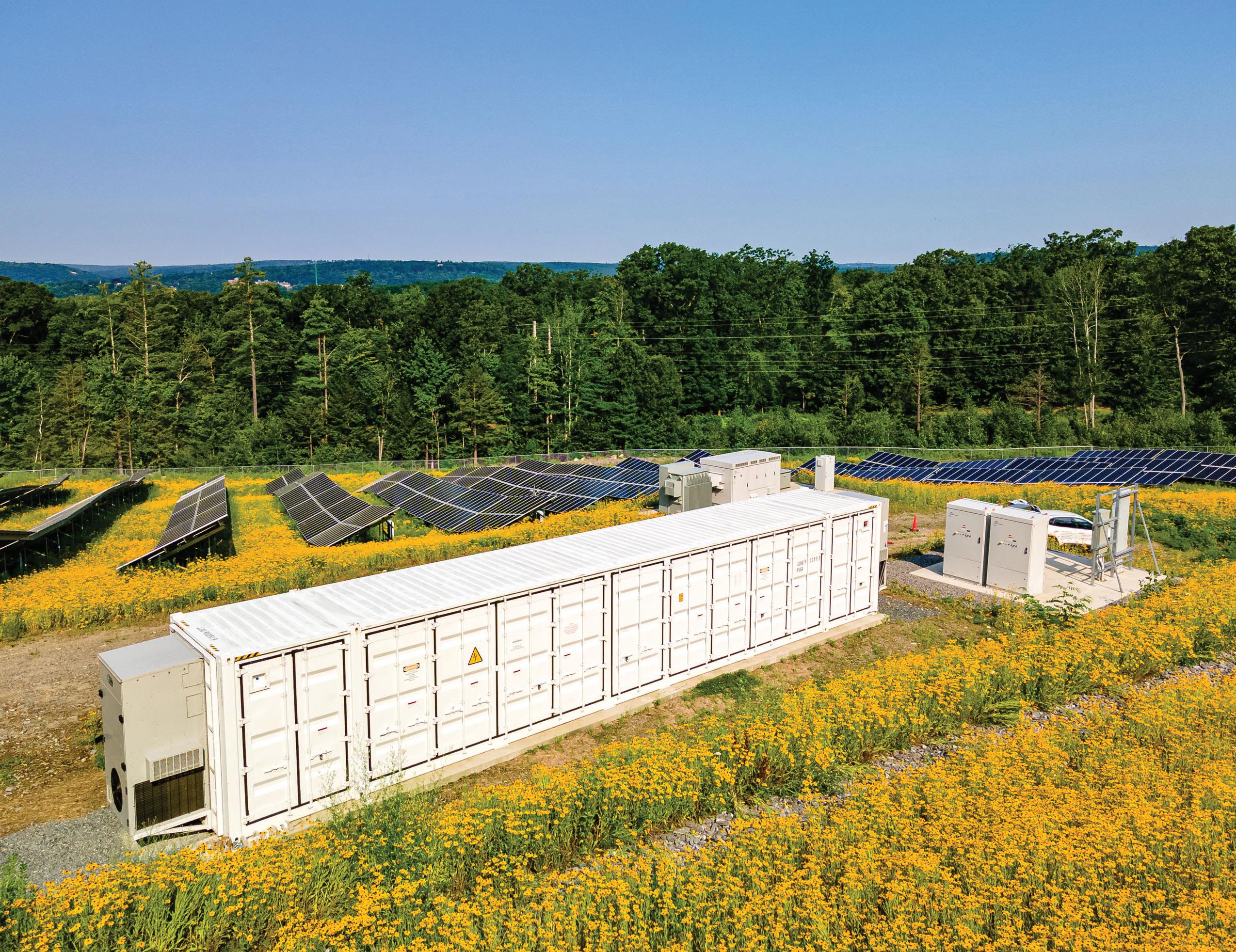
24 SOLAR POWER WORLD MARCH 2024 www. solarpowerworldonline .com STORAGE TECHNOLOGY KELLY PICKEREL • EDITOR IN CHIEF
Nexamp
projects themselves, Arreola said using energy storage benefits subscribers too.
“Adding storage makes community solar projects more efficient. For Perch, more efficient systems enable us to offer more subscriptions per project,” she said.
Ritchie explained this as getting more usage out of the solar project’s generation window.
“Energy storage assets shift solar generation from the middle of the day to afternoon peak periods in the summer. That increases the credits that Nexamp receives, so we have more in our bucket to pass along to subscribers through the community solar program,” he said. “It doesn’t generate additional kilowatthours, but it shifts that solar generation and shifts the value of it to allow us to pass along that value to our subscribers.”
As the separate community solar and energy storage markets continue to evolve, there are growing opportunities for retrofit situations. Massachusetts and

New York recently tweaked their storage incentive programs, and Nexamp is looking back at its existing portfolio of community solar projects to find where adding energy storage would further improve a project’s financial and community impact. Ritchie said the company takes the “community” signifier of its work seriously.
“We look at these communities as a long-term partner,” he said. “If we did a project on this side of town, instead of doing [storage] on [the other]
side of town, it’s easier to come in and continue to work on this existing parcel of land. How can we work together as a community, taking into account the feedback we received three years ago before we did the solar project? How can we partner to continue to make this a good fit for the local community?
“We’re trying to keep an eye out for new market opportunities to continue to add value to our existing fleet for our customers and Nexamp as well,” Ritchie said. SPW


LIKE
STORAGE TECHNOLOGY
WWW.RENUBOT.COM
Nexamp
A MOWING CREW
A MACHINE THAT WORKS
Once an industry staple, what happened to AC modules?
AC modules were once considered one of the hottest solar developments within the residential market. These “smart” modules came with microinverters preattached and pre-wired, theoretically saving installation time on the roof. In the mid-2010s, there were AC modules on display in nearly every module manufacturer’s booth at tradeshows. Research groups expected the smart panel market (which also includes panels with pre-attached DC optimizers) to become a significant module category, with the global share reaching 1 GW by 2020. Now midway through the 2020s, it’s tough to find an AC module offered anywhere. Where’d they go?
The COVID-19 pandemic wasn’t the death knell to the AC module, but it is a bookend to the specialty panel’s almost-decade of existence within the United States. In 2019, the two main AC module suppliers, Panasonic and LG, released their final AC module series — Panasonic with the Enphase IQ7x microinverter and LG with its own whitelabeled microinverter. Both companies made panels for the residential market using the traditional “60-cell” footprint that maxed out at 375 WDC. When Panasonic moved to larger panel sizes in 2021 and LG completely exited solar panel manufacturing in 2022, the AC module seemed to disappear in the United States.
David Lopez, national sales manager for Panasonic Eco Systems of North America, said that his company found success with AC modules because of their all-in-one warranty. Panasonic’s AC modules also had exclusivity rights with Enphase’s IQ7x microinverter, which was difficult to find through distributors otherwise. But after changing module formats and realizing installers used multiple microinverter models for the same solar

panel model, trying to make a one-sizefits-all AC module made less sense.
“There hasn’t been any significant resistance from installers regarding our decision to discontinue AC modules, suggesting they aren’t necessarily missing that option,” Lopez said.
Iowa-based ECG Solar prides itself on largely being an ACPV installer, and president Jason Gideon said ECG is a big supporter of Enphase, but the company’s experience with LG made it step away from AC modules specifically. Having one warranty cover the panel and the microinverter is great — until that company goes out of business.
“Getting warranty replacements for LG is difficult. If the module is OK but the inverter is bad, you have to replace the whole thing,” he said. “And then finding panels that fit that former size is hard, so redesigning layouts takes time.”
Gideon said the pre-wiring on AC modules was a real time saver on the ground, but his crews now prefer to
place the microinverter on the array’s rails for easier access in O&M situations. Panasonic ultimately found the AC module’s lack of installation flexibility a hindrance to its more widescale adoption.
“Despite the perception that using AC modules would streamline installation and potentially lower costs compared to using separate modules and microinverters, the reality often proved different. Installation could sometimes be more challenging with AC modules due to reduced flexibility in positioning the rails beneath the solar panels and being limited to specific microinverter models,” Lopez said.
The decline in AC modules in the United States is not a blow to the microinverter market. Enphase is currently the most quoted inverter brand in the United States, holding somewhere around 70% of the market, according to EnergySage. ACPV installations are still alive and well; they’re just not grounded in AC module design.
26 SOLAR POWER WORLD MARCH 2024 www. solarpowerworldonline .com
PANEL TECHNOLOGY
KELLY
PICKEREL • EDITOR IN CHIEF
LG’s AC module, which was discontinued in 2022.
“Using AC solar modules is a business decision for installers. AC modules can offer a 20 to 40% reduction in installation time relative to similar installs without the integration,” said an Enphase spokesperson in an email to Solar Power World. “[Some] businesses may want the flexibility of installing a microinverter but want to be able to switch panels. It depends on the business models.”
Not everyone is giving up on AC modules though. Qcells announced last year that its AC SMART System, composed of AC modules and an energy storage system, would be available to the North American market in late 2024. And Enphase hasn’t stopped making AC module partnerships — the company’s microinverters are part of SunPower’s Equinox system in the United States. When Maxeon took over SunPower
panel manufacturing in 2020, Maxeon brought the Enphase-paired AC module to the global market. Although Maxeon is not currently advertising the AC module to U.S. customers, the company sells the specialty product in Australia, Europe, the Middle East and Africa.
Silicon Valley-based microinverter company Northern Electric Power (NEP) isn’t against AC module designs either. Its BDM 400 microinverter is purposebuilt for AC module setups, with a thinner design and mounting holes within its case for easier attachment to a panel’s frame. NEP is currently supplying its microinverter to startup Solvari for its AC module that should enter production this year.
It’s not quite a comeback, but the AC module seems unwilling to enter retirement. Perhaps 2024 will be a transformative year for the specialty product. SPW
PANEL TECHNOLOGY



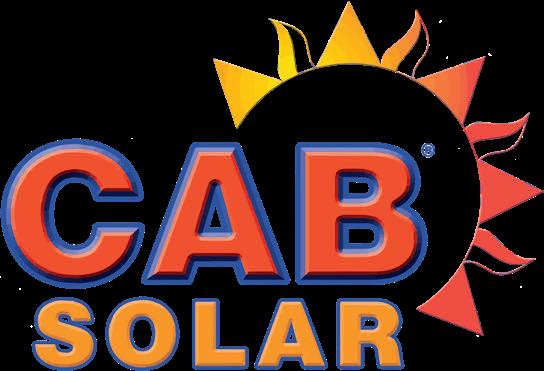
An ACPV installation completed by ECG Solar in the 2010s. The Patented Above-Ground Cable Management System with Integrated Grounding. www.cabsolar.com Patent Protected: www.cabproducts.com/patents
THINK YOUR SOLAR INSTALLATION COMPANY IS THE BEST IN THE BUSINESS? PROVE IT! GET VERIFIED ON THE MOST EXCLUSIVE LIST OF SOLAR CONTRACTORS IN THE UNITED STATES. APPLY BEFORE MAY 24! SOLARPOWERWORLDONLINE.COM/TSC
The promise of grid-forming inverters
A non-descript, boxy piece of connection equipment known as a gridforming inverter could hold the key to restarting the grid after an outage. Like the difference between self-driving and conventional cars, grid-forming inverters are not physically different from their traditional grid-following counterparts. What sets the inverters apart are the controls inside.
Inverters with grid-forming controls can provide system support functions on power grids with very large amounts of renewable, inverter-based resources like solar, wind and batteries. Similar
to the self-driving capability that can control and drive a car in response to traffic, grid-forming inverters can sense and respond to changes on the grid in real time. This ability makes it possible for a network of solar energy systems to designate a subset of its inverters to operate in grid-forming mode while the rest follow their lead. That means they’re able to maintain stable grid voltages and frequencies during disturbances and disruptions, which is critical to the reliability and resilience of the grid’s operation.
Grid-forming inverters can also
Wheatridge Renewable Energy Facility in Oregon is the first energy center to combine wind, solar and energy storage systems in one location in North America. It is testing how grid-forming inverters interact with the grid.
restart a downed grid using inverterbased resources like solar, wind and batteries — a process known as black start. Traditional “grid-following” inverters, on the other hand, require normal grid voltage and frequency already be established, like through a natural gas power plant, before they can inject power into the grid.
The Biden-Harris Administration set an ambitious goal to decarbonize the grid by 2035, and the National Renewable Energy Laboratory (NREL) found that wind and solar energy could provide as much as

BECCA JONES-ALBERTUS • DIRECTOR, DOE SETO INVERTER TECHNOLOGY
29 SOLAR POWER WORLD MARCH 2024 www. solarpowerworldonline .com
INVERTER TECHNOLOGY
80% of generation on a 100% clean electricity grid. As more inverter-based resources are deployed, the grid will need to adapt to these new types of energy technologies.
The future grid has three main characteristics: lower inertia, more uncertainty and more distributed energy resources. DOE is investing in technology research, development and demonstration to support operating a power system with up to 80% of generation from wind and solar, which would experience periods using close to 100% inverter-based resources. These resources are already more prevalent in certain regions.
Hawaiian islands like Kauai and Maui are routinely operating with over 80% inverter-based resources today.
DOE is funding research and innovation to support the integration of grid-forming inverters into electric
grids of steadily increasing size and complexity. For example, DOE awarded $2.9 million to NREL to create and validate advanced grid models that can simulate dispatching and dynamic response behaviors of inverter-based resources. NREL found that implementing grid-forming controls on several inverters could help stabilize a 100% renewable energy system on Maui.
In 2021, DOE launched the Universal Interoperability for GridForming Inverters (UNIFI) Consortium, a $25 million initiative with the goal of leading the industry to achieve the full potential of grid-forming technologies. NREL, University of Texas at Austin and the Electric Power Research Institute lead UNIFI and aim to develop a universal set of guidelines for the integration of inverter-based resources on the grid. UNIFI has developed
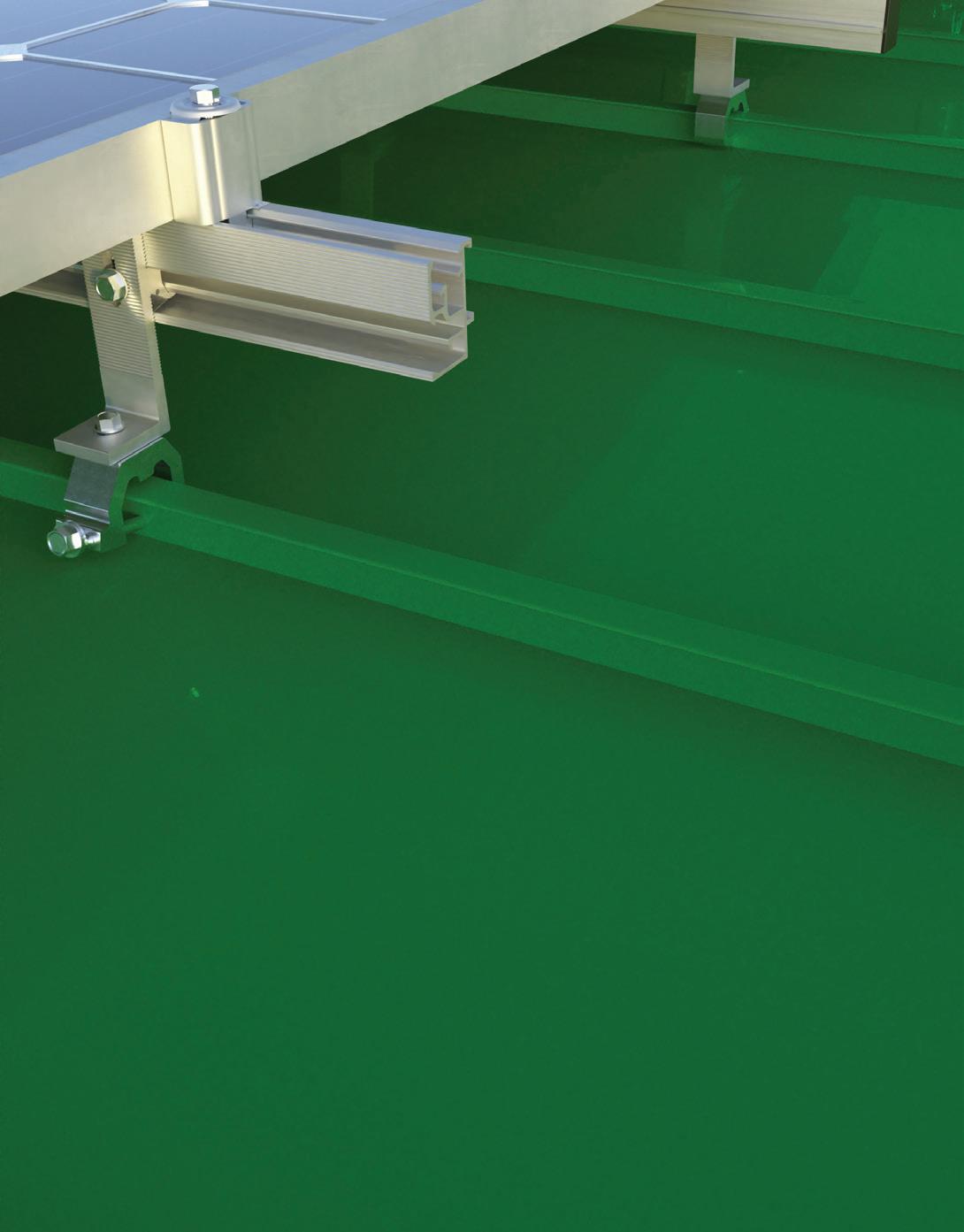
guidelines and specifications for how companies should build and test gridforming inverters to see how they work together in a large power grid. UNIFI also includes activities in standards, commercialization, education, training and field demonstration.
In a related effort, in May 2023
DOE awarded $26 million to eight projects to support the development and demonstration of essential grid reliability services provided by largescale wind, solar and energy storage facilities. One project, led by Portland General Electric, is demonstrating gridforming inverters at the Wheatridge Renewable Energy Facility in Oregon, North America’s first energy center to combine wind, solar and energy storage systems in one location. If successful, this will be the first bulk power systemconnected grid-forming hybrid power plant in the United States and could encourage utilities to consider including grid-forming capabilities in their own interconnection requirements.
Grid-forming inverters are just beginning to be deployed. As the technology matures and the grid transitions to more renewable resources, these DOE-funded demonstrations will build the case for leveraging gridforming inverters to maintain grid reliability. Over the next several years, grid-forming inverters could become a more prevalent and essential feature of the modern grid. SPW




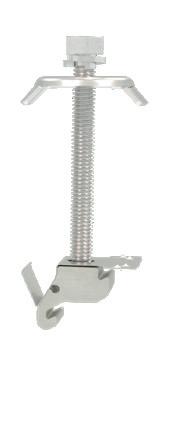
SNAP, SLIDE & SECURE ® SNAP, SLIDE & SECURE ® ® ® SNAP, SLIDE & SECURE ® 860-385-8877
& SECURE
BUILT TO LAST THE LIFE OF THE ROOF .COM by TM 30 SOLAR POWER WORLD MARCH 2024
SNAP
FAST! PRE-ASSEMBLED LABOR SAVINGS
ATLANTA, GA
Join conversations with industry buyers, suppliers, distributors, consultants, and more to explore solutions, exchange ideas, and discover new technologies witin the industry.
17-18,
APRIL
2024
REGISTER TODAY | RE-PLUS.EVENTS/SOUTHEAST
SE24_PrintAd_SPW.indd 1 2/16/24 3:37 PM

DESIGNED | ENGINEERED | SUPPLIED | INSTALLED Design-Build Since 1981 1.800.366.9600 : baȷacarports.com : ewf@baȷacarports.com • Built better in the USA for over 40 years by our own unmatched baȷa-Certified Construction Teams • Fully integrated solutions with in-house baja Engineers for faster, easier projects • Pre-Fabricated Framing Systems with Bolted Connections – No field welding • Snow Loads from 20psf to 100psf – Wind Speed rated to 170MPH • Over 40MW built per year
INSTALLER HOW TO BE A BETTER
SPW COLLECTED TIPS FOR CONTRACTORS OF ALL SIZES ON WHICH SOLAR-SPECIFIC TOOLS ARE OUT THERE, HOW TO STAY SAFE WHEN WORKING, B.O.S. POINTERS AND SOME SPECIAL INSTALLATION AIDS.
33 SOLAR POWER WORLD MARCH 2024 www. solarpowerworldonline .com
INS TALLATION TIPS X TOOLS
WITH
SO MUCH MONITORING IN INVERTER APPS AND ELSEWHERE, WHY ARE TESTING DEVICES STILL IMPORTANT?
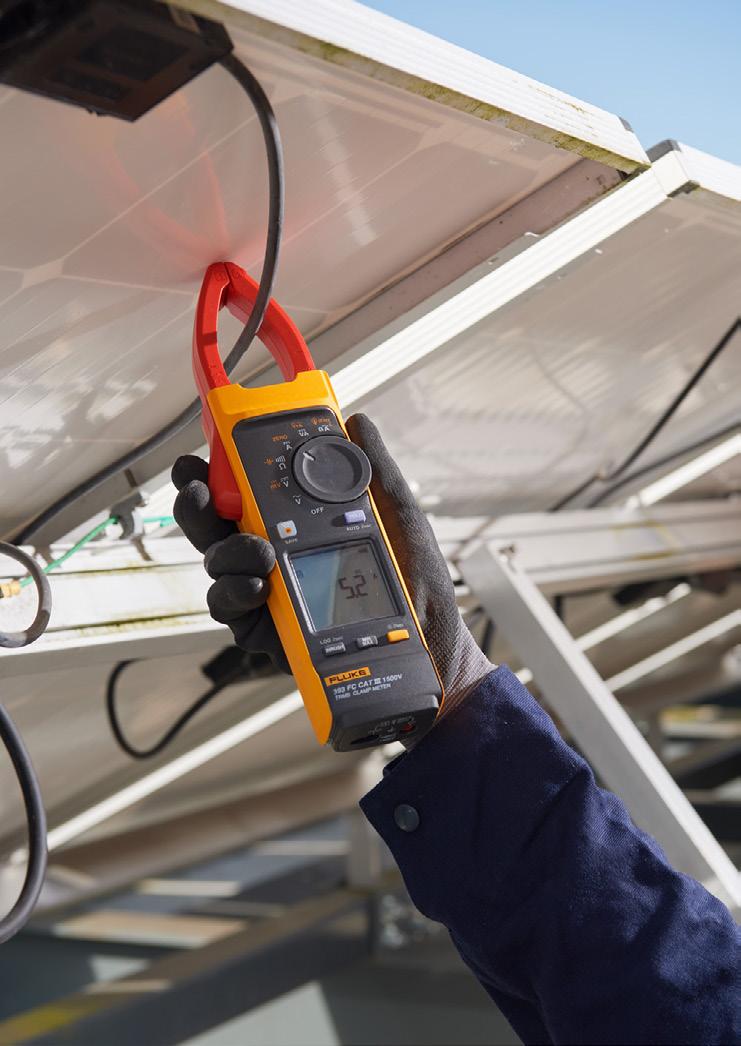
The inverters that we’re using these days are transformerless, and they essentially do an insulation resistance test every morning before the system turns on. But when you’re doing the installation, you want to identify those problems before you turn the system on. When you get into the operations and maintenance and troubleshooting side, a lot of times the inverter can identify that there’s a problem there, but it’s not necessarily going to tell you what the exact problem is or where that problem is located. You’re going to use your test and measurement tools to dig in deeper to find the root cause. There are inverters that do IV curve traces internally and that’s starting to become a little bit more common, but having the individual IV curve tracer gives you the ability to go out into the field and really pinpoint problems.
WILL WHITE, SOLAR APPLICATIONS SPECIALIST, FLUKE
WHAT BENEFITS DOES MILWAUKEE’S NEW TORQUE IMPACT WRENCH BRING TO UTILITY-SCALE SOLAR INSTALLERS?
We got a lot of requests from different trades to have an impact wrench where you could magically tell it the torque and it would give that. We realized pretty quickly that solar has the most to gain from a product like that with the amount of wasted time on a jobsite going around and clicking bolts with a mechanical click wrench.
With most installers today, it’s a guess at the torque, there’s no control. A lot of customers will say they tell their guys to count to two or set the RPM lower, and that prevents it from over torquing. But then it takes 10 seconds to do the application. A lot of people wanted something that could just be programmed and ready to go.
We went out to design a product that was durable and powerful but also could control its torque output, with the hopes that they could eventually get the repeatability and accuracy they’re looking for.
MARK KELLY, SENIOR PRODUCT MANAGER, MILWAUKEE
TOOL

34 SOLAR POWER WORLD MARCH 2024 www. solarpowerworldonline .com
INSTALLATION TIPS X INSTALL AIDS
HOW DOES USING DRONES AND AERIAL IMAGERY HELP SOLAR CONTRACTORS IN EVENTUAL HANDS-ON INSTALLATION?

Using photogrammetry-derived measurements from geotagged drone data ensures that final designs and engineering documents are perfectly accurate — no change orders or revisions will occur during the build process. Installers can access the Scanifly 3D model of the property on their mobile devices, which helps them conduct safety walk-throughs, get full site context and plan for the project before they arrive on site. Field teams can also refer to annotated images for any pertinent information from surveyors and designers, and as a result, installers save time, improve safety and are more prepared for each job.
BRAD KNUDSEN, PRODUCT MARKETING MANAGER, SCANIFLY
WHAT WAS LEARNED AFTER A SUCCESSFUL DEMONSTRATION OF THE TERAFAB AUTOMATED INSTALLATION PLATFORM?

The Terafab construction automation platform installed 17 MW of the 225-MW White Wing Ranch project in Arizona during fall 2023. Terafab provided workers with shaded and cooled working conditions to allow for system operation in a very hot desert environment (up to 120°F during some days). It completely eliminated the manual lifting of heavy steel tubes and solar panels, a first in the industry. The automated system demonstrated labor productivity improvements of 25% compared with manual installation. We were able to enable a 100% return of PV module packaging for reuse by the manufacturer. And Terafab demonstrated the compelling synergy of automation, internet of things, a digital twin and data analytics to improve solar construction management on a remote site with difficult environmental conditions.
MATT CAMPBELL, CEO, TERABASE ENERGY
35 SOLAR POWER WORLD MARCH 2024 www. solarpowerworldonline .com
INS TALLATION TIPS X BOS
WHAT
RISKS
SHOULD
SOLAR
CONTRACTORS
BE AWARE OF WHILE HANDLING CABLES?

First and foremost, solar contractors need to think long-term. While using quick and cheap options for cable management may seem like the best option initially, they can cost you more in the long-run due to subsequent failures and service calls. Using a better product in the beginning can ensure a permanent solution that will last. This also means using a product that is gentle on wires and cables. Over the course of 25+ years, with wind, rain and UV exposure, the cables will naturally have some rubbing and friction against any cable management product.
Metal ties can lead to damaged cables and failures, especially when flat against the wire. A round cable management product with a coating will be far gentler on cables and protect against cable damage and any potential failures. While there are some products that address these concerns, they often require tools to crimp and cut the cable tie. Each crimp needs to be perfect, as poor crimps can lead to failures. And all of this takes time. A tool-free solution that removes these potential points of failure all while being easier to use is the best of all worlds.
MITCH HOFFMAN, DIRECTOR OF MARKETING, EZ SOLAR
PRODUCTS
WHAT ARE YOUR TOOLS OF CHOICE FOR CABLE MANAGEMENT?
When you’re handling small-scale cable management, ditching the tools is the way to go. The less time spent fussing with tools and fixings, the better. But when you’ve got heavier loads to deal with, that’s when we bring out our secret weapon: the Gripple Torq Tool. It allows you to tension catenary wires for above-ground cable management in just seconds.
And when it comes to dealing with electrical and mechanical cables, you’ve got to have the right gloves and glasses. Cables can be sneaky and could even poke your eye out if you’re not geared up. Also, make sure you’ve got a solid pair of insulated lineman safety gloves handy!
DEAN BARLOW, GROUP PRODUCT MANAGER, GRIPPLE
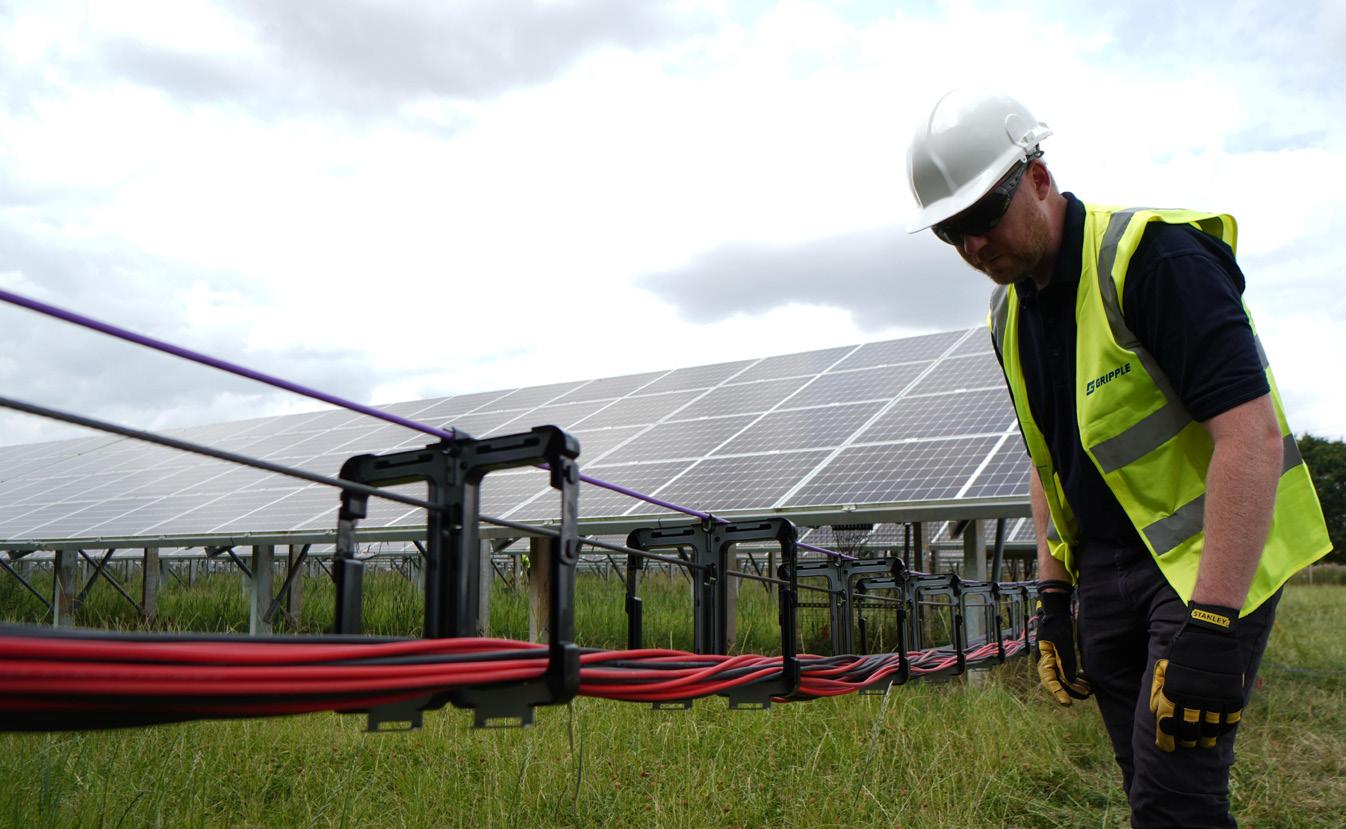
36 SOLAR POWER WORLD MARCH 2024 www. solarpowerworldonline .com
INSTALLATION TIPS X SAFETY
HOW MUCH OF A DIFFERENCE DOES USING UV-RATED CLOTHING MAKE IN REGIONS WITH HIGH SUN EXPOSURE?
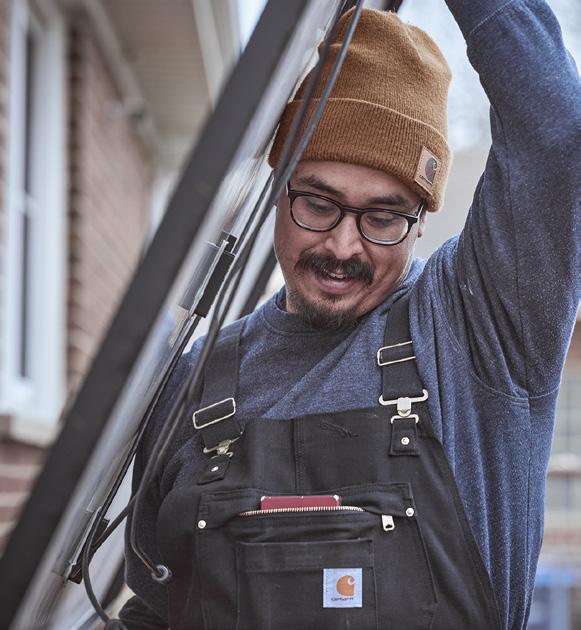
For solar contractors exposed to the elements and sun during hot, humid weather, there is no escaping the challenging working conditions. Providing the right equipment and tools, like UVrated clothing, is imperative to supporting and keeping crews safe. Carhartt released a heat safety whitepaper that communicates smart steps to help crews avoid heat-related injuries, including: Act before it gets hot: OSHA estimates that 50-70% of outdoor worker heat-related fatalities occur in the first few days of working in hot weather. Make sure your crew has the right workwear and safety procedures in place when you know high heat is coming.
Educate your crew: Ensure everyone understands that heat stress can be dangerous and educate them on ways to beat the heat before these weather conditions arrive.
Provide the right equipment and tools: Companies should look for ways to improve jobsite resiliency by building in plans for dealing with extreme temperatures. During the high-heat months, provide workers PPE with advanced UV-protective fabric technologies. Other remedies like portable fans, water misters and simple barrier protection, like tarps or screens, can help reduce the danger.
KENDRA LEWINSKI, SENIOR MARKETING MANAGER, CARHARTT COMPANY GEAR
WHAT ARE THE ESSENTIAL REQUIREMENTS FOR FALL SAFETY EQUIPMENT FOR ROOFTOP SOLAR INSTALLERS?

The best fall protection equipment ensures both maneuverability and legal compliance, and certain key components are indispensable for a solar installer’s fall protection kit.
A harness with a sternal attachment rated for fall arrest is essential, featuring a chest ring designed to legally connect a lifeline and fall arrester. Opt for a lightweight, flexible and comfortable harness without a waist belt to facilitate unrestricted movement. Avoid mating buckles, as they can be challenging to manipulate with gloves.
A hands-free fall arrest system that allows for the carrying of solar panels and equipment arrester should be accompanied by a shock
absorber to minimize stress on the individual in case of a fall. A thin and lightweight rope or lifeline that complements the hands-free fall arrester is also important.
A secure and reliable roof anchor is crucial to providing a stable connection point for the fall protection system. By utilizing a fall protection kit specifically designed for solar installers, you can enhance both the accuracy and frequency of usage, ensuring a safer and more efficient working environment for you and your team.
KEVIN KING, PRESIDENT, SOLAR TOOLS USA
37 SOLAR POWER WORLD MARCH 2024 www. solarpowerworldonline .com
Standard Solar
Solar developer recognizes vital role of technological innovations and promise of community solar.

Several mid-sized solar businesses are experiencing rapid growth this year and looking to scale sustainably and effectively. They are also enjoying the additional opportunities brought by the Inflation Reduction Act and the community solar sector.
Standard Solar, a national solar developer, financier and owner-operator of more than 350 MW of solar, has been improving and innovating to keep pace with the increased demand for solar, particularly in the community solar market, an area of expertise for the company.
In this edition of our Contractor’s Corner series, we speak with C.J. Colavito, VP of engineering at Standard Solar, about what makes the company unique, the most impactful technological advances and what the future holds for community solar.
How does your company stand out from competitors?
Standard Solar has deep expertise in solar DG development, engineering, construction, O&M and asset management. We have over a decade of experience in all of these areas. Because of this level of expertise, we are uniquely able to dig deep into the details to support our development partners and customers to solve problems and deliver successful projects. Another important characteristic of Standard Solar is that we pride ourselves on transparency backed up by fair and reasonable business practices. We do what we say we are going to do.
How has the IRA changed the way you do business?
The IRA is an excellent piece of legislation that strongly supports our
industry. However, we have changed little about how we do business as a result. A few minor changes include adjusting our EPC and installation contracts to include provisions for prevailing wage and apprenticeship program requirements, working closely with our vendors to understand and identify opportunities to maximize domestic content, and including terms in our project acquisition agreements to share ITC bonus upside value with our development partners.
What solar technology improvement has made installations easier or better?
Equipment manufacturers have consistently delivered useful innovations to improve solar PV systems my entire career. The most recent improvements have come from commercial string inverter manufacturers who have introduced inverters that can produce
CONTRACTOR'S CORNER
38 SOLAR POWER WORLD MARCH 2024 www. solarpowerworldonline .com SARA CARBONE • FREELANCE CONTRIBUTOR
more than 200 kW each, while maintaining the relatively small size inverter and modularity. The higher power inverters allow us to use combiner boxes up to the 400-A level, which are more similar to what is used with central inverters. This reduces costs on labor and material for installation of the inverters and combiner boxes. When the larger inverters are configured in a virtual central layout with 1 to 3 MWAC of inverters grouped together, we can better reap the cost efficiency benefits of a centralized inverter approach as well as the flexibility and ease of replacement associated with string inverters.
PV module manufacturers continue to innovate with higher-efficiency cells and PV modules. It is ideal when the module efficiency improves while maintaining the same frame size and module form factor as the previous generation. This allows for an easy drop-in replacement of the PV module into existing designs and projects. Specifically, TOPCon PV cell technology has delivered a 5 to 7% improvement in module power without changing module dimensions. The higher efficiency PV modules enable us to get better power density in the same area, yielding larger PV systems. Alternatively, if we are not space constrained, the higher-efficiency PV modules reduce the amount of racking and labor needed to deploy the same DC power.
What’s your view of the future of the community solar sector?
I think the community solar sector will continue to lead the growth of the non-utility-scale space. There is a great need for more community solar, plenty of demand in many markets and the projects are able to be deployed more efficiently at larger scale than typical behind the meter C&I. Community solar and other similar virtual metering state-level programs are essential to enabling the deployment of solar PV systems on less useful sites, like landfills and brownfields. I think community
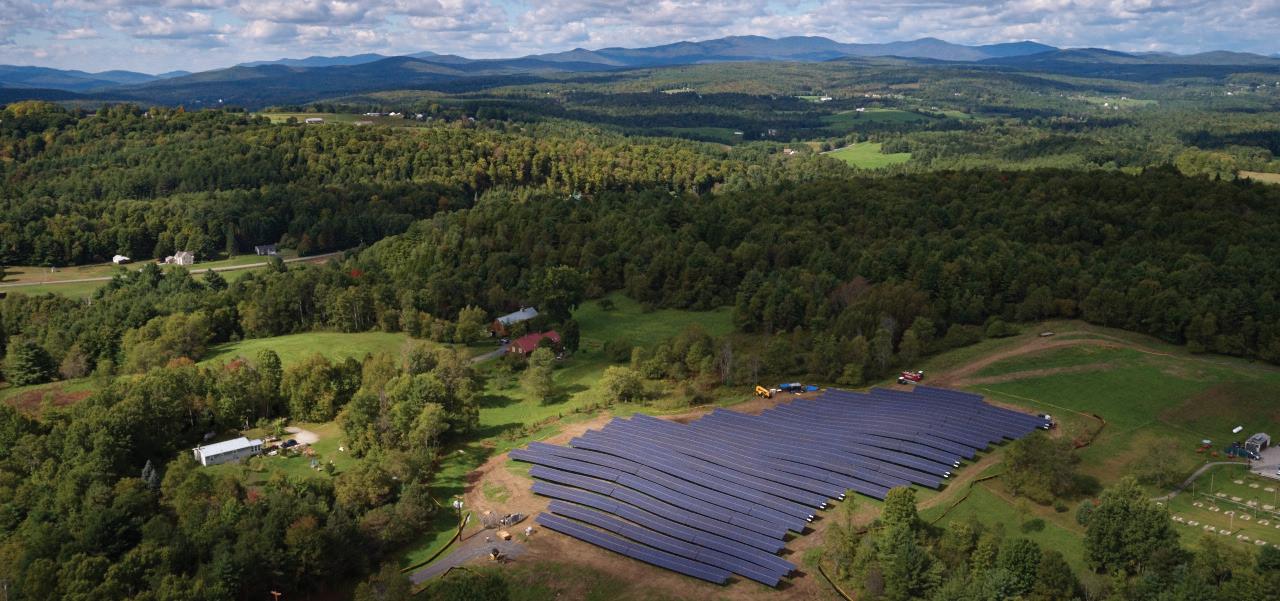
solar will only slow down in markets if one of the two following issues arise:
1) subscriber pools become too small due to lack of population density or because the vast majority of subscribers are already engaged or 2) the electrical distribution network can no longer accept more DER interconnections due to high DER penetration. We are
already seeing markets such as Maine and Delaware with limited subscribers available, and we are seeing markets such as Massachusetts and New Jersey where the distribution network is unable to accept additional interconnections without very large upgrades or significant innovation and collaboration between utilities and solar developers. SPW

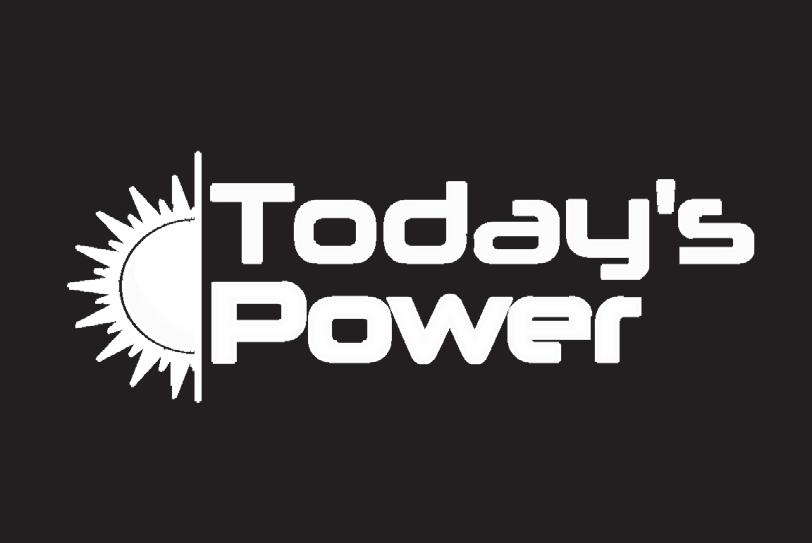



CONTRACTOR'S CORNER
39 SOLAR POWER WORLD MARCH 2024
LET’S STAY IN TOUCH 501.438.0031 todayspower.com As a top-tier provider of renewable energy solutions, TPI is committed to advancing communities through comprehensive services that integrate sustainable energy practices and environmental solutions. Solar Battery Energy Storage Operations & Maintenance EV Charging Consulting





































































LEADERSHIP TEAM
CEO















Scott McCafferty 310.279.3844 smccafferty@wtwhmedia.com









































Executive Vice President Marshall Matheson 805.895.3609 mmatheson@wtwhmedia.com





























Senior Vice President Courtney Nagle cseel@wtwhmedia.com 440.523.1685
























The solar industry is constantly evolving into emerging markets through product innovation. Success would not be possible without the ingenuity and determination of our leaders. These individuals and companies are working for the growth of the entire renewable energy industry.





















Ashley N. Burk 737.615.8452 aburk@wtwhmedia.com
Jami Brownlee 224.760.1055 jbrownlee@wtwhmedia.com

The future of the industry will build on the foundation of today’s efforts. Solar Power World would like to acknowledge such achievements in leadership. These accomplishments in racking and mounting, inverters, modules and more are what drive those gigawatts and create jobs.




Jim Powers 312.925.7793 jpowers@wtwhmedia.com




















We think they deserve recognition from you, too. Vote online for one or more of the companies listed through October.
SOLAR POWER WORLD does not pass judgment on subjects of controversy nor enter into disputes with or between any individuals or organizations.
SOLAR POWER WORLD is also an independent forum for the expression of opinions relevant to industry issues. Letters to the editor and by-lined articles express the views of the author and not necessarily of the publisher or publication. Every effort is made to provide accurate information. However, the publisher assumes no responsibility for accuracy of submitted advertising and editorial information. Noncommissioned articles and news releases cannot be acknowledged. Unsolicited materials cannot be returned nor will this organization assume responsibility for their care.









SOLAR POWER WORLD does not endorse any products, programs, or services of advertisers or editorial contributors. Copyright©2024 by WTWH Media, LLC. No part of this publication may be reproduced in any form or by any means, electronic or mechanical, or by recording, or by any information storage or retrieval systems, without written permission from the publisher.
SUBSCRIPTION RATES: Free and controlled circulation to qualified subscribers. Non-qualified persons may subscribe at the following rates: U.S. and possessions,



SUBSCRIBER
SOLAR





leadership.solarpower worldonline.com
SALES 40 SOLAR POWER WORLD MARCH 2024 AD INDEX AceClamp ................................................... 30 American Clean Power 2 American Wire Group 23 AP Systems ....................................................3 Baja Carports 32 Boviet Solar 1 Briggs & Stratton ........................................ 11 CAB Solar 27 Megger 5 PV Labels IFC QC Solar 22 Quest Renewables 7 QuickBOLT IBC RE+ Events 31 Renu Robotics 25 Snake Tray BC Solar Mounts ............................................... 15 19 Today’s Power 39
2
3
1 year: $125;
years: $200;
years $275; Canadian and foreign, 1 year: $195; only U.S. funds are accepted. Single copies $15. Subscriptions are prepaid by check or money orders only.
SERVICES: To order a subscription or change your address, please visit our web site at www.solarpowerworldonline.com
POWER WORLD - VOLUME 14 ISSUE 2 - (ISSN2164-7135) is published 7 times per year: January, March, May, July, September, November and December by WTWH Media, LLC, 1111 Superior Avenue, 26th Floor, Cleveland, Ohio 44114. Periodicals postage paid at Cleveland, OH and additional mailing offices. POSTMASTER: Send address changes to Solar Power World; 1111 Superior Avenue, 26th Floor, Cleveland, Ohio 44114. WTWH Media, LLC: 1111 Superior Avenue, Suite 2600, Cleveland, OH 44114 Ph: 888.543.2447 Fax: 888.543.2447 HELP US HONOR THE COMPANIES THAT HAVE PROVIDED LEADERSHIP IN THE RENEWABLE ENERGY INDUSTRY.



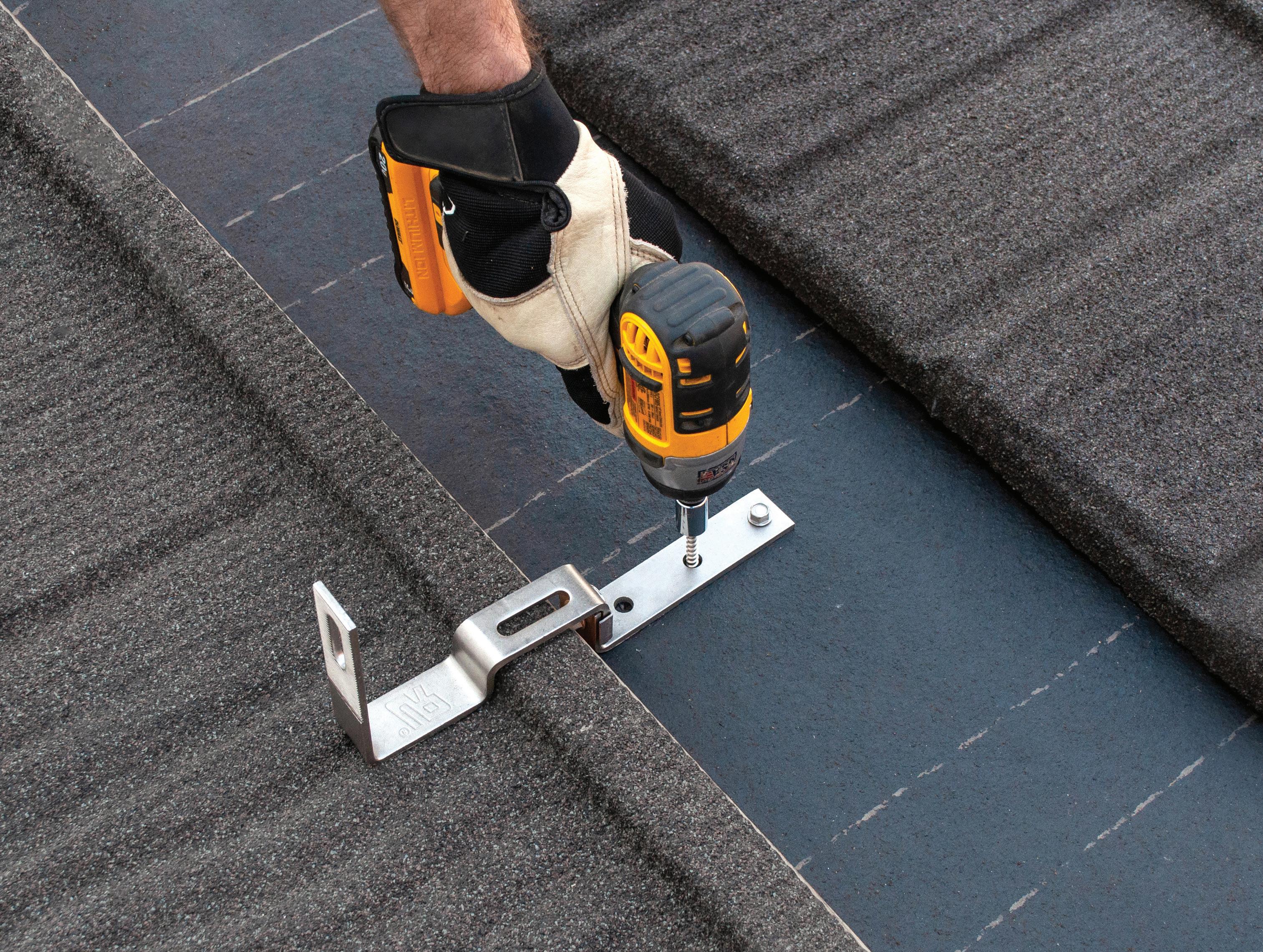
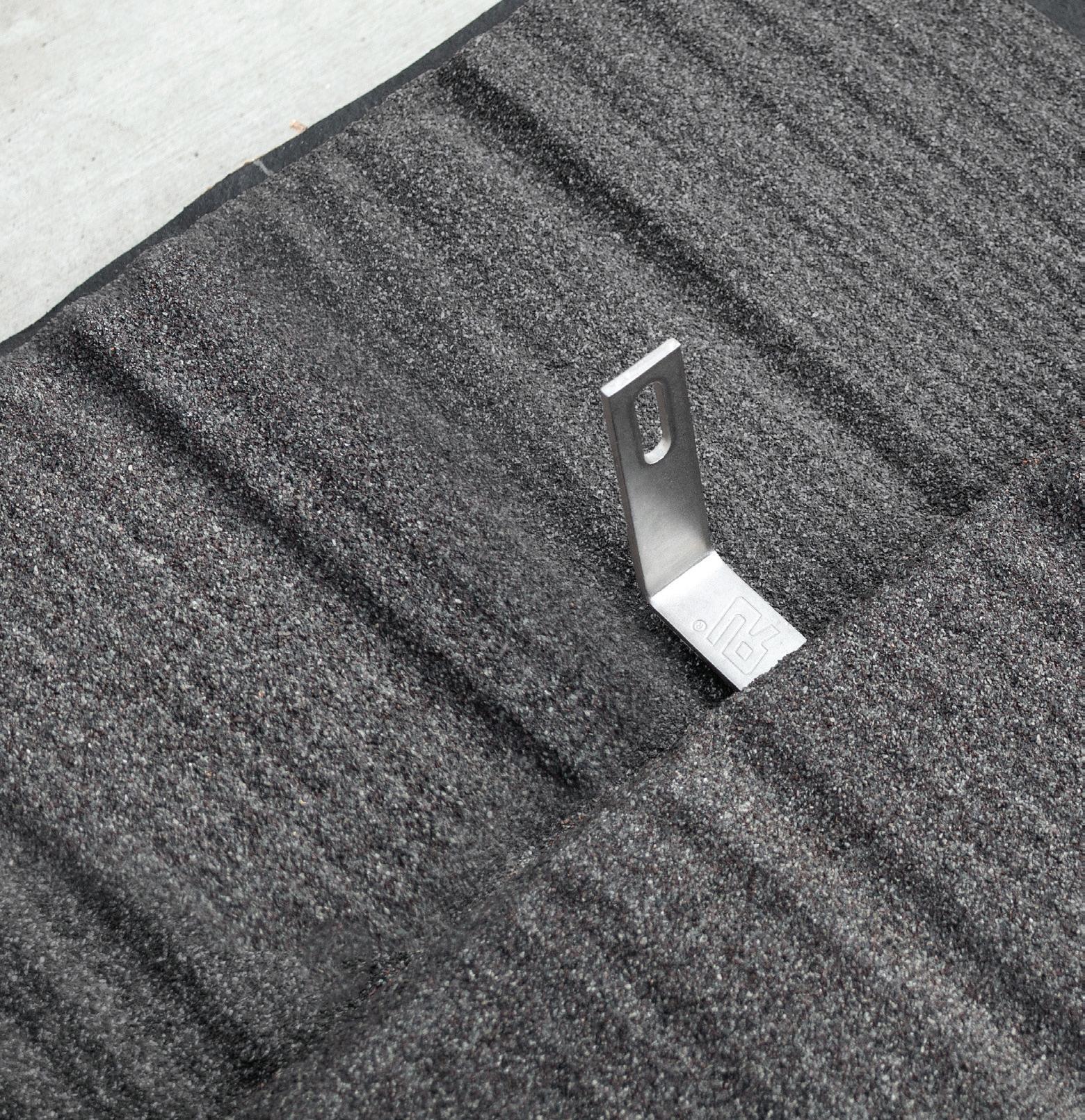











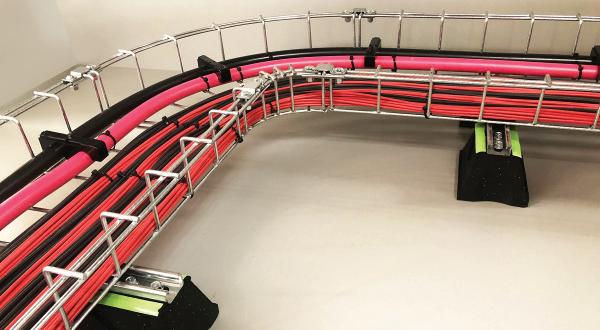
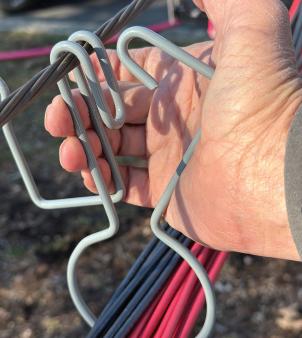

407 Hand Bendable Solar Snake Tray® Roof Top, Ground Mount and Car Park Installations 801 Solar Mega Snake® Ground Mount, Brown Field and Roof Top Installations Snake-Loc String and Feeder Cable Hanger Messenger Wire Installations Cable Management for Solar Solar Snake Max XL™ - Utility Ground Mount, Battery Storage and EV Installations www.snaketray.com |Made in the USA Snake Tray® products are covered by one or more of the following patents:#5839702, #5953870, #6019323, #6347493, #6361000, #6449912, #6460812, #6463704, #6637165, #6637704, #6926236, #7168212, #7959019, #8622679, #8783628, #8985530, #8985530 B2, #9074707, #10225947, #10225947 B2, #10666029, #10666029 B2, #10944355 B2, #11271519 B2, #20180313469 A1, #20180317336 A1, #20190229507, #2020030461, #20200403390, #20210126445 A1, #20210194419 A1, #20210336430 A1, #20220112969, #20220221174. Foreign Patents: Australia #737813, #748160, #749488, #776643, #776644. Canada #2251732, #2319624, #2303081, #2396792. Japan #3723224. Mexico #204995, #229386, #220889. Europe #1012938, #1012937. Other Patents Pending. CALL 800-308-6788 TO DISCUSS YOUR NEXT PROJECT LET THE PHYSICS OF SOLAR SNAKE MAX XL™ HELP YOU HARNESS MORE ENERGY AND MONEY FROM THE SUN! Maintains NEC 310.15 code compliant cable separation which can yield up to 30-watt hours per meter more energy than bundled or trenched cables. No trenching or derating of cables. Accommodates cables ranging from 350 - 1250 Kcmil.




































































































































































































































































































